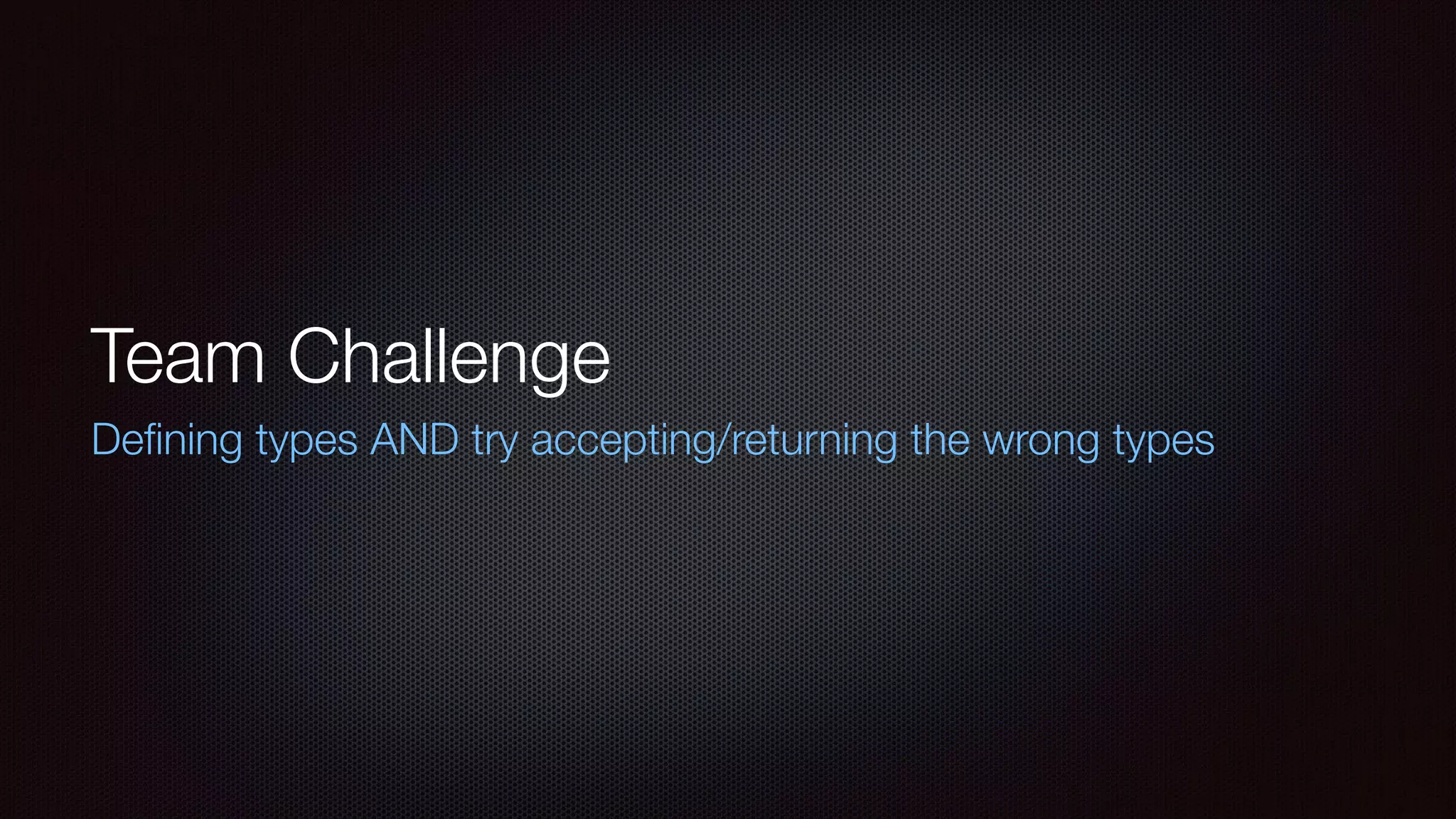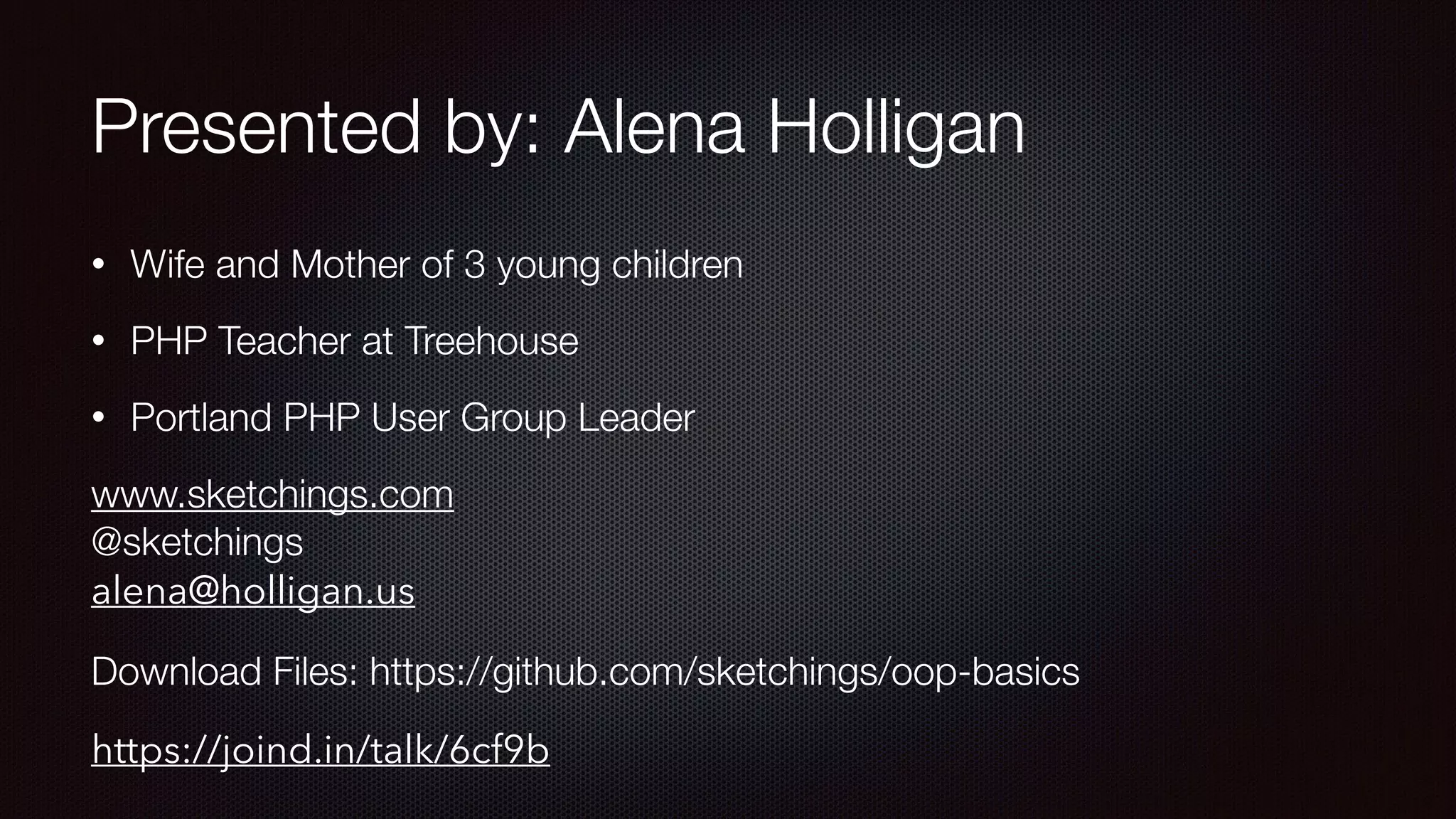The document presents a detailed overview of object-oriented programming (OOP) concepts, including classes, objects, inheritance, polymorphism, and magic methods, explained through examples and challenges. Alena Holligan, a PHP teacher and Portland PHP user group leader, emphasizes practical applications and team collaboration in OOP. Resources for further learning and downloads are provided through links to relevant materials.
![PHP[TEK] 2017 Wifi: Sheraton Meeting Network
Pass: php2017
Twitter: #phptek Rate the talks https://joind.in/event/phptek-2017](https://image.slidesharecdn.com/demystifyingoop-170523183857/75/Demystifying-Object-Oriented-Programming-PHP-tek-2017-1-2048.jpg)


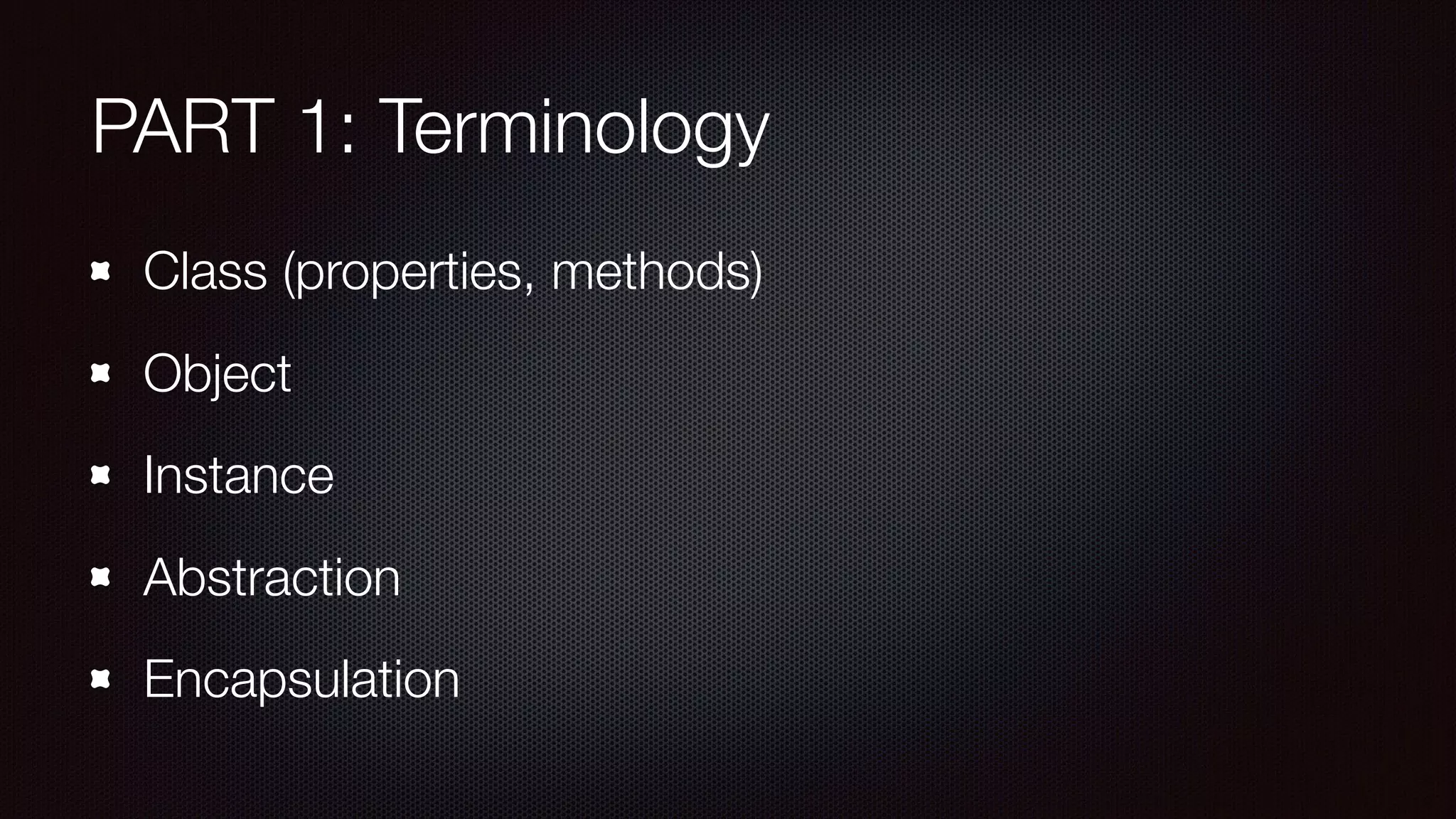

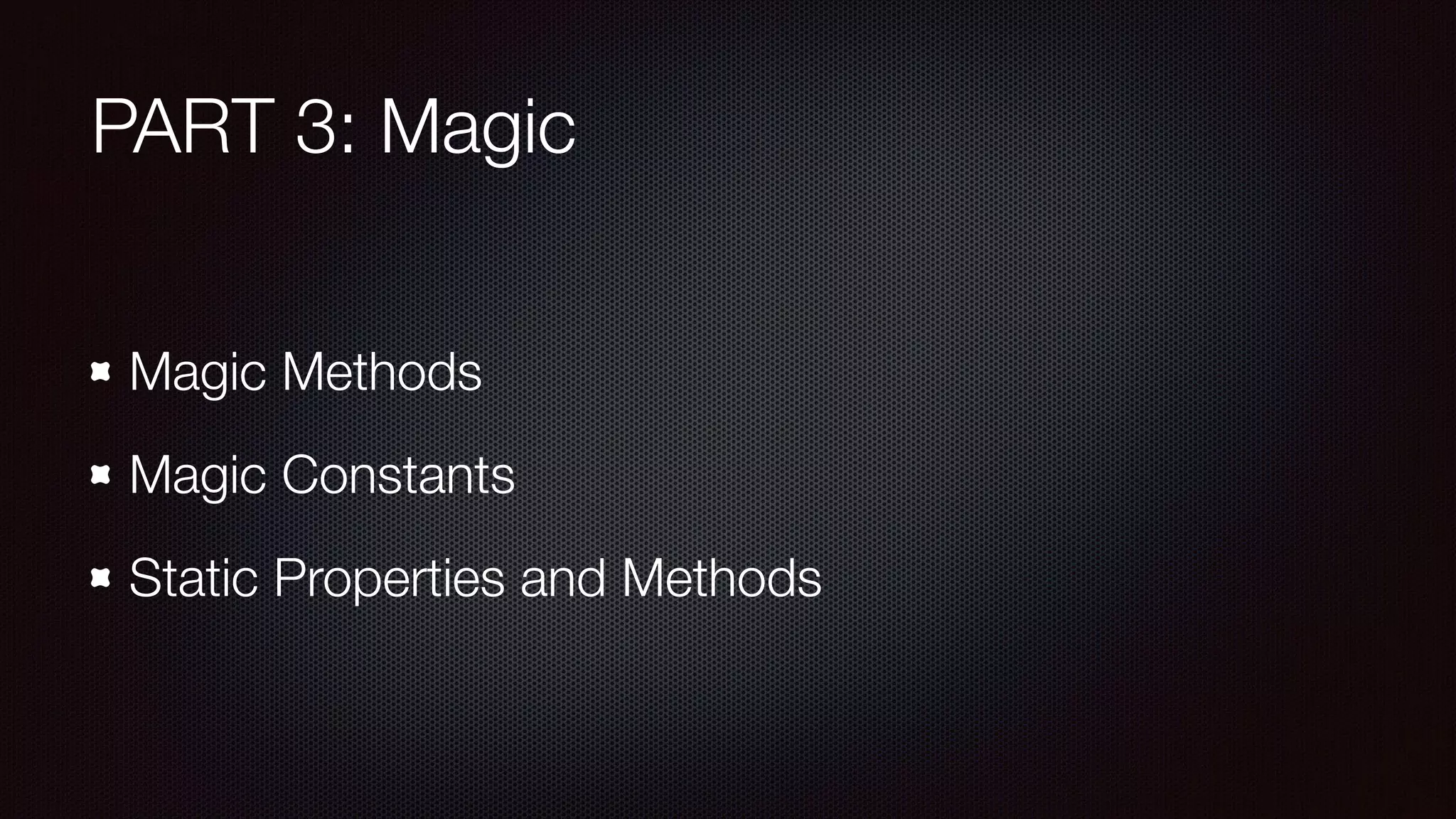



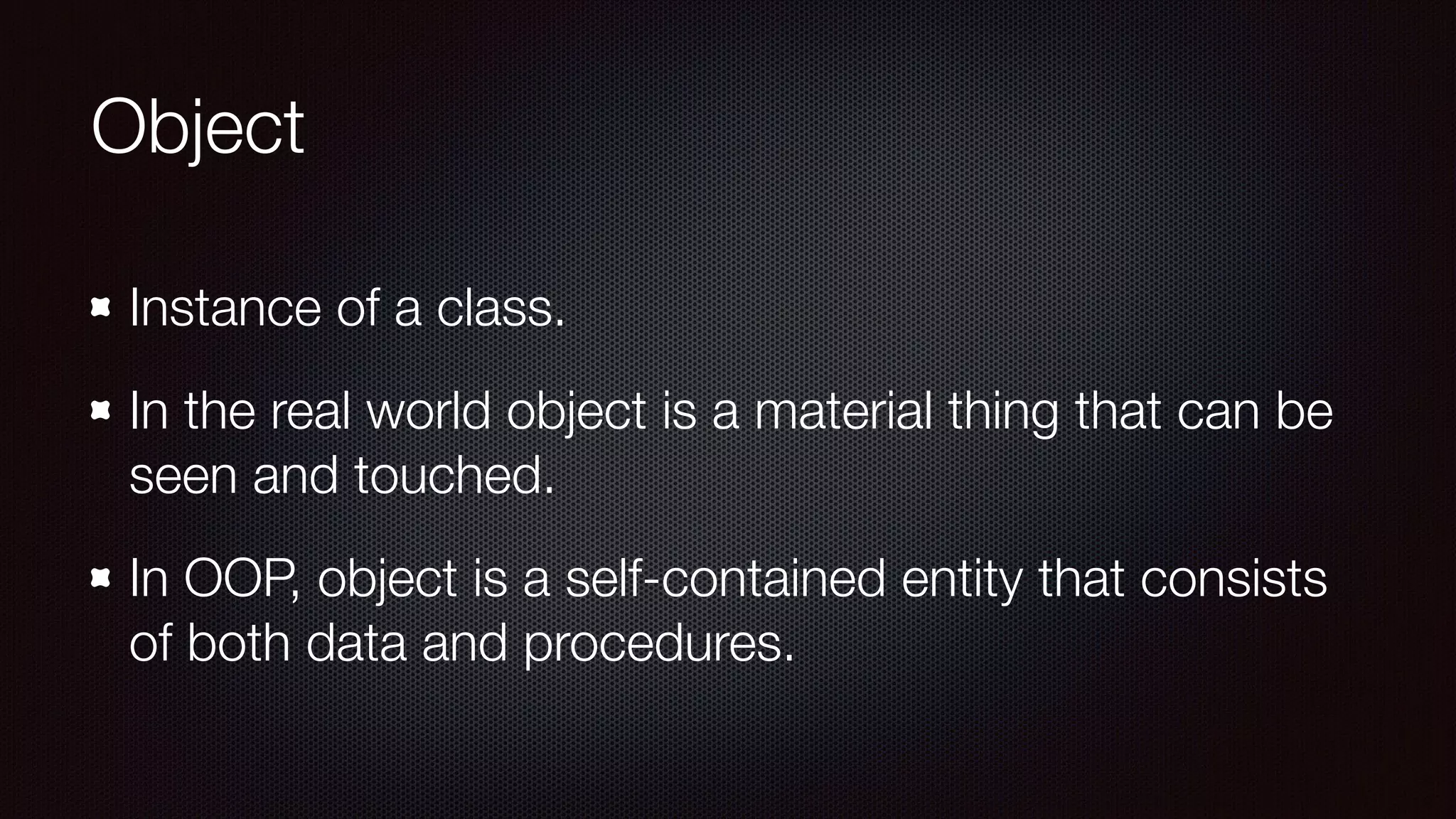
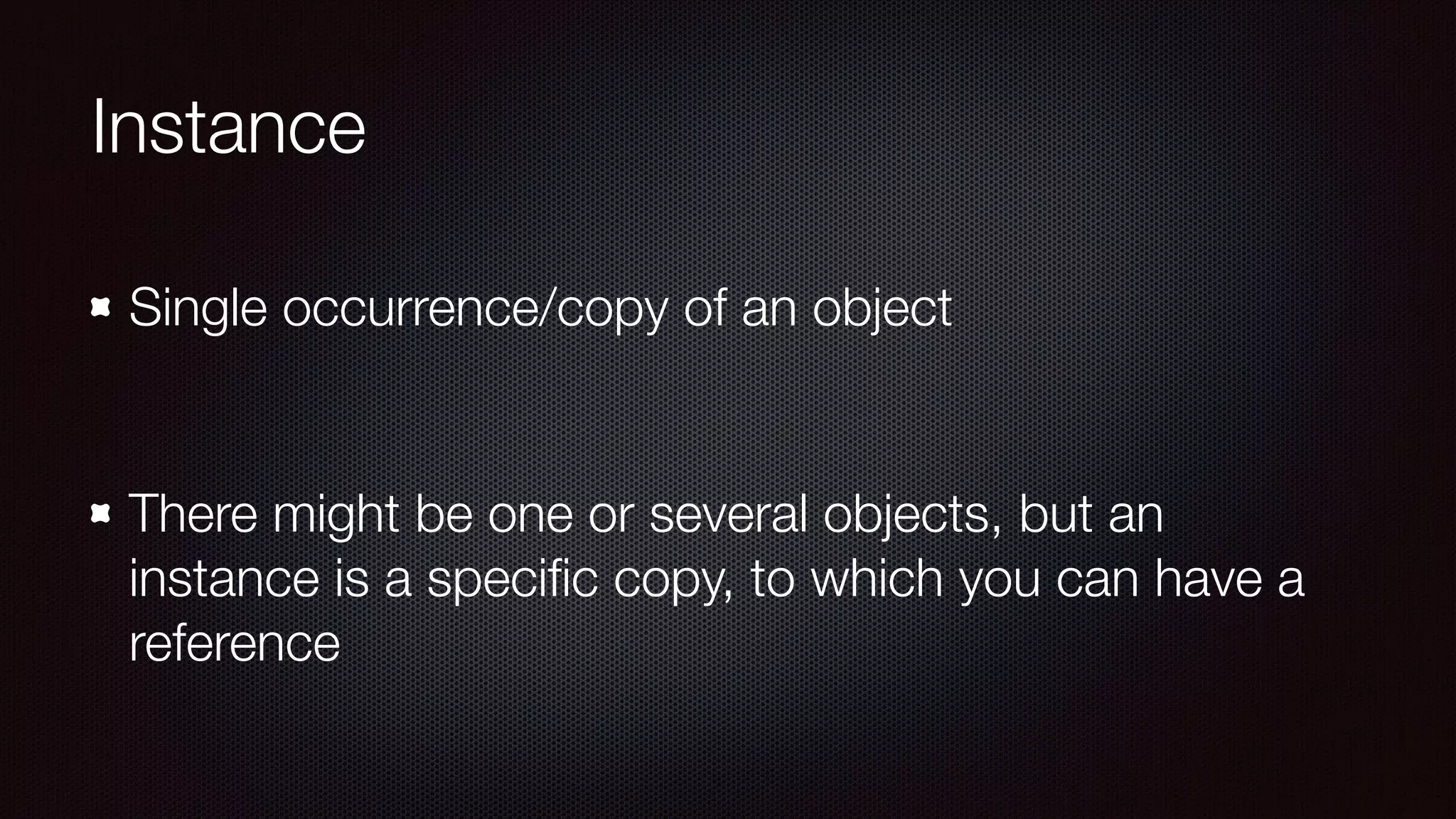
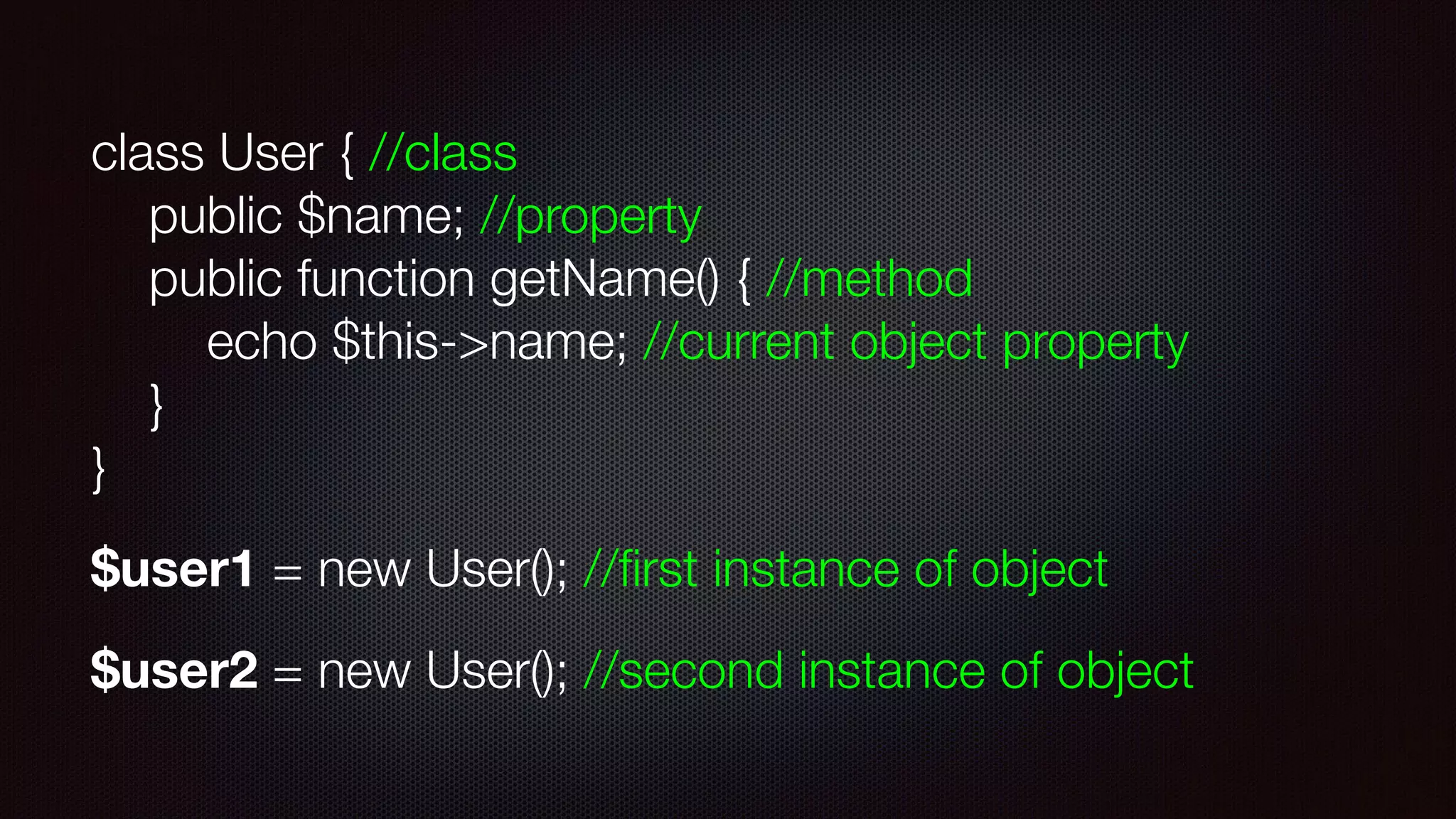


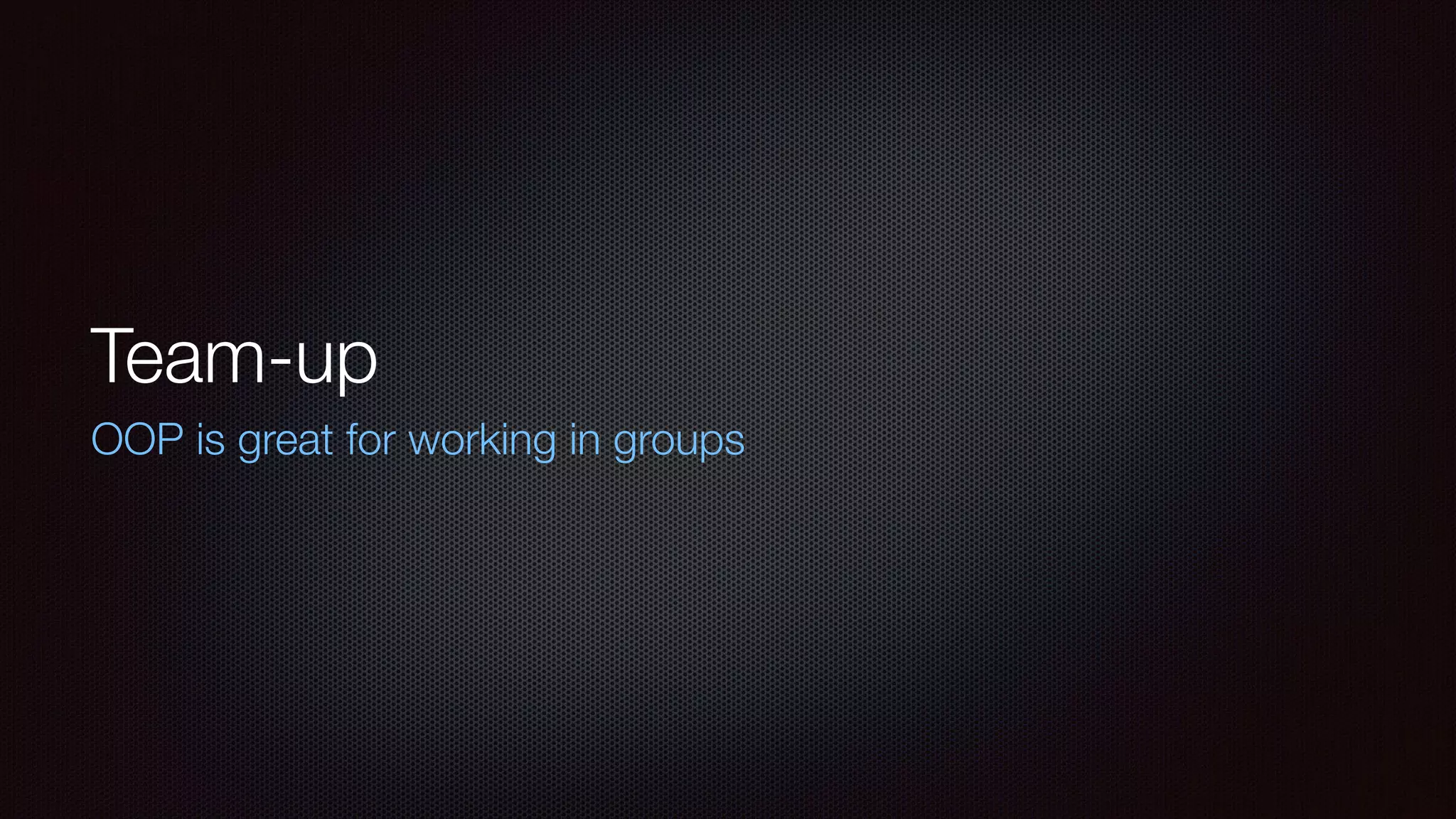
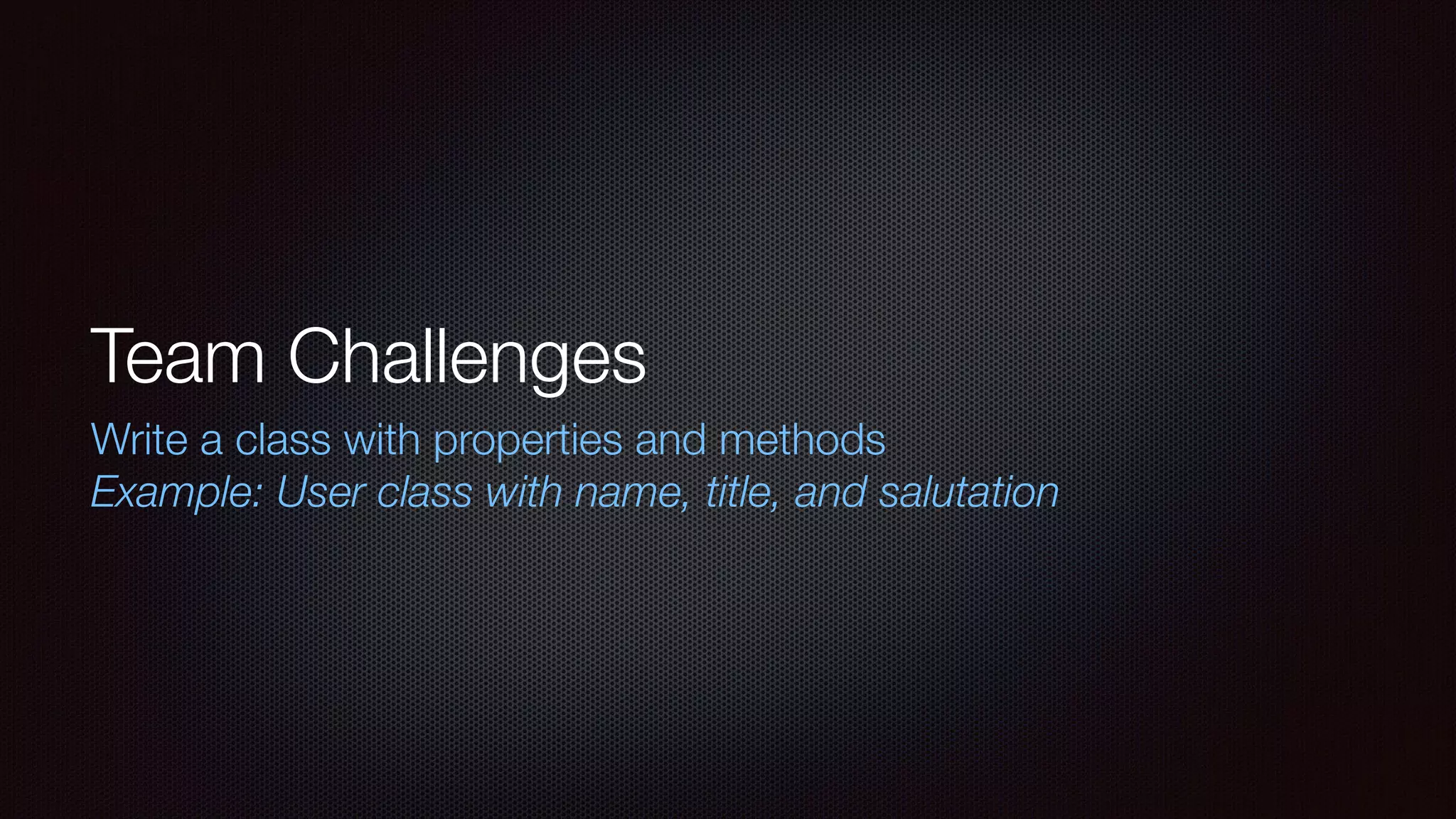
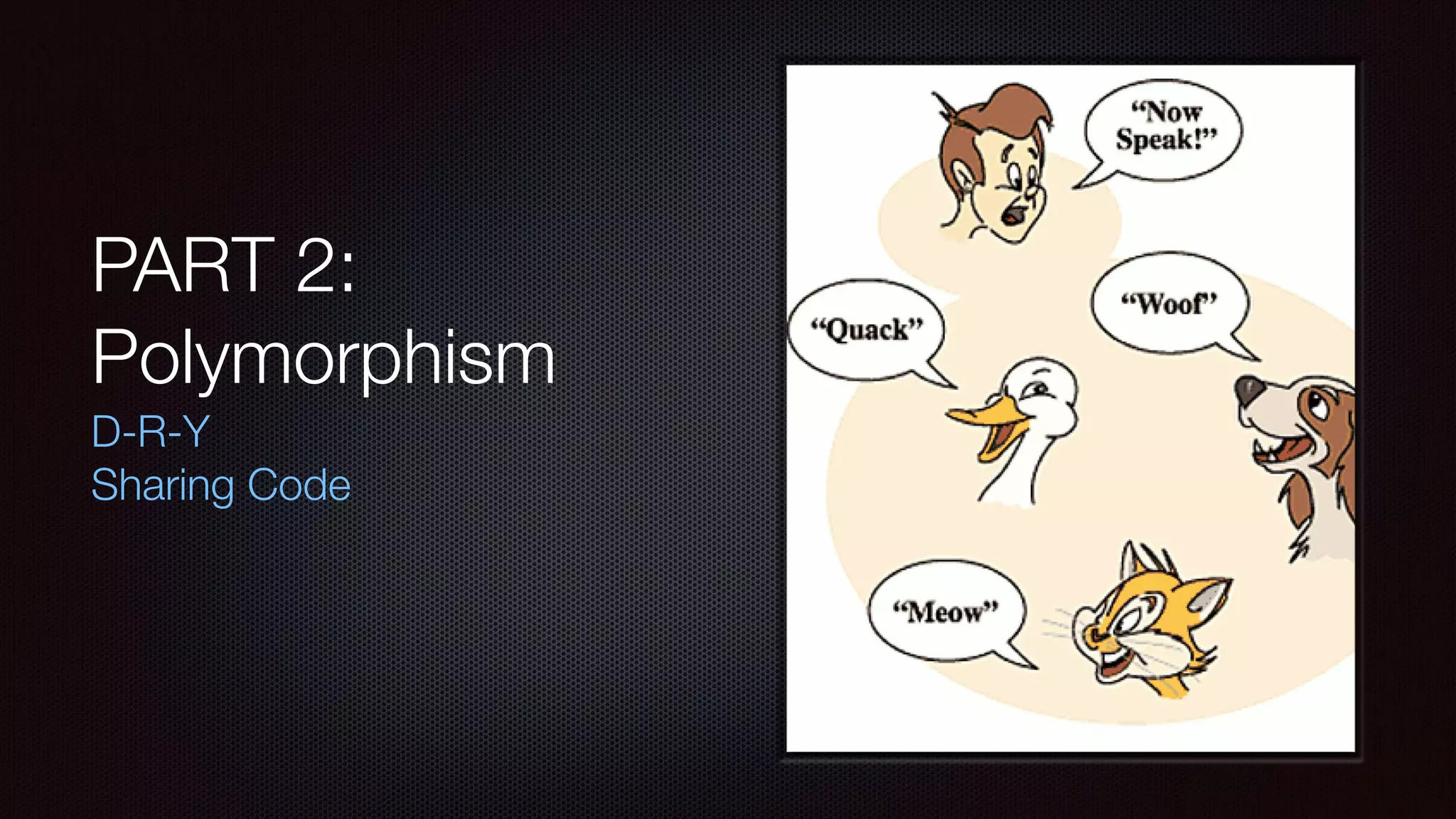
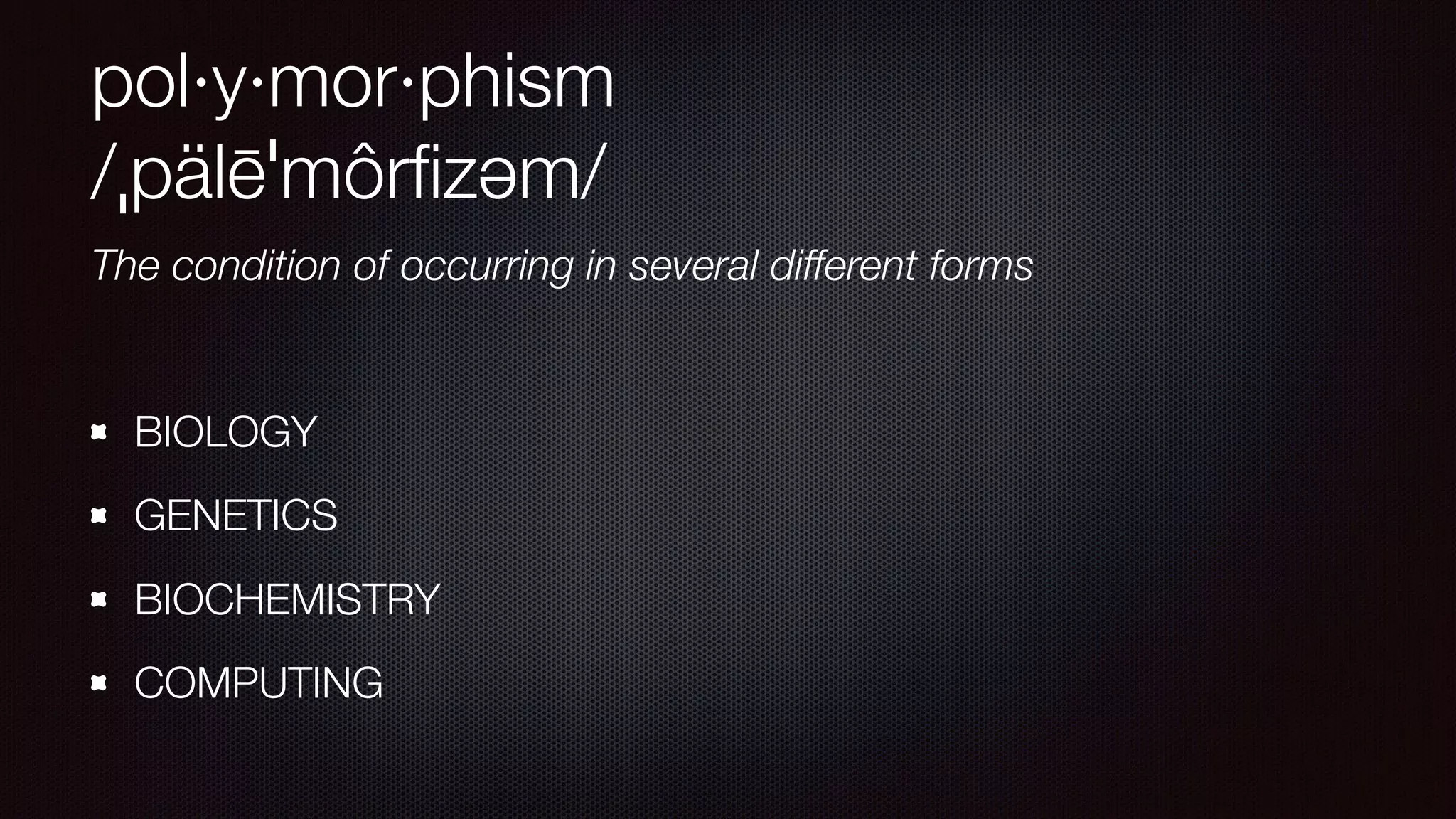
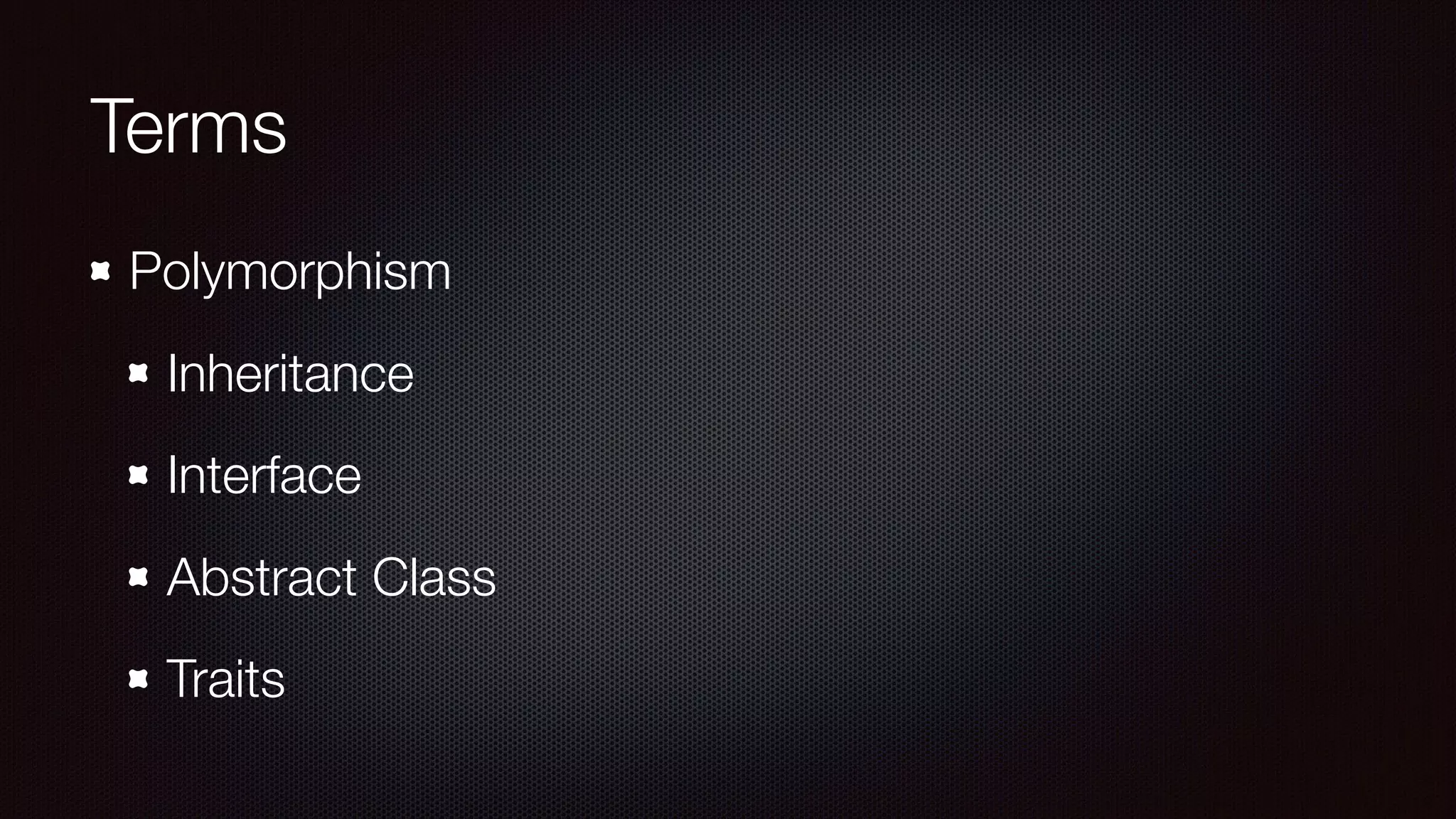

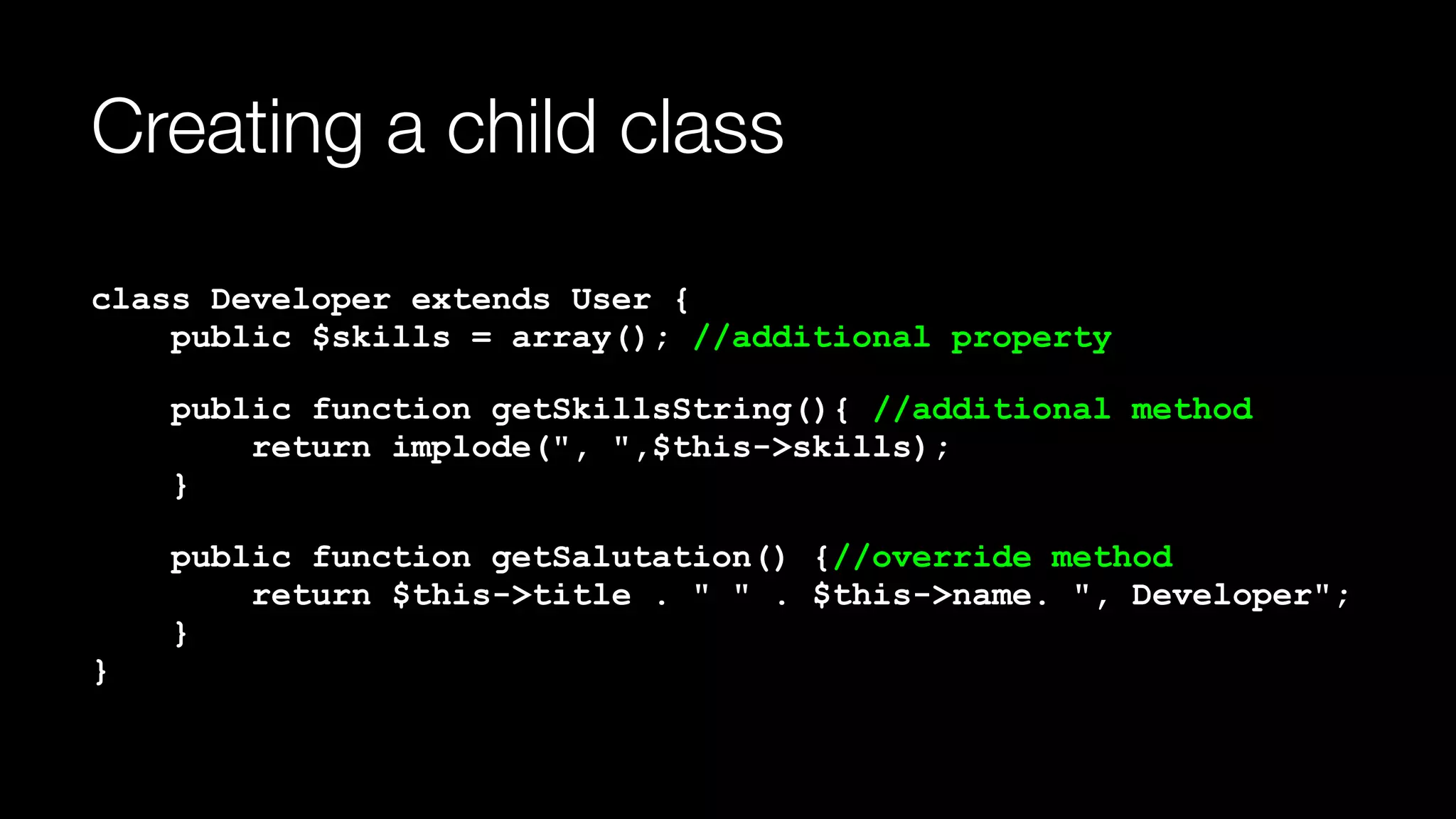
![Using a child class $developer = new Developer();
$developer->setName(”Jane Smith”);
$developer->setTitle(“Ms”);
echo $developer->getFormatedSalutation(); $developer->skills = array("JavasScript", "HTML", "CSS");
$developer->skills[] = “PHP";
echo $developer->getSkillsString(); When the script is run, it will return: Ms Jane Smith, Developer JavasScript, HTML, CSS, PHP](https://image.slidesharecdn.com/demystifyingoop-170523183857/75/Demystifying-Object-Oriented-Programming-PHP-tek-2017-22-2048.jpg)
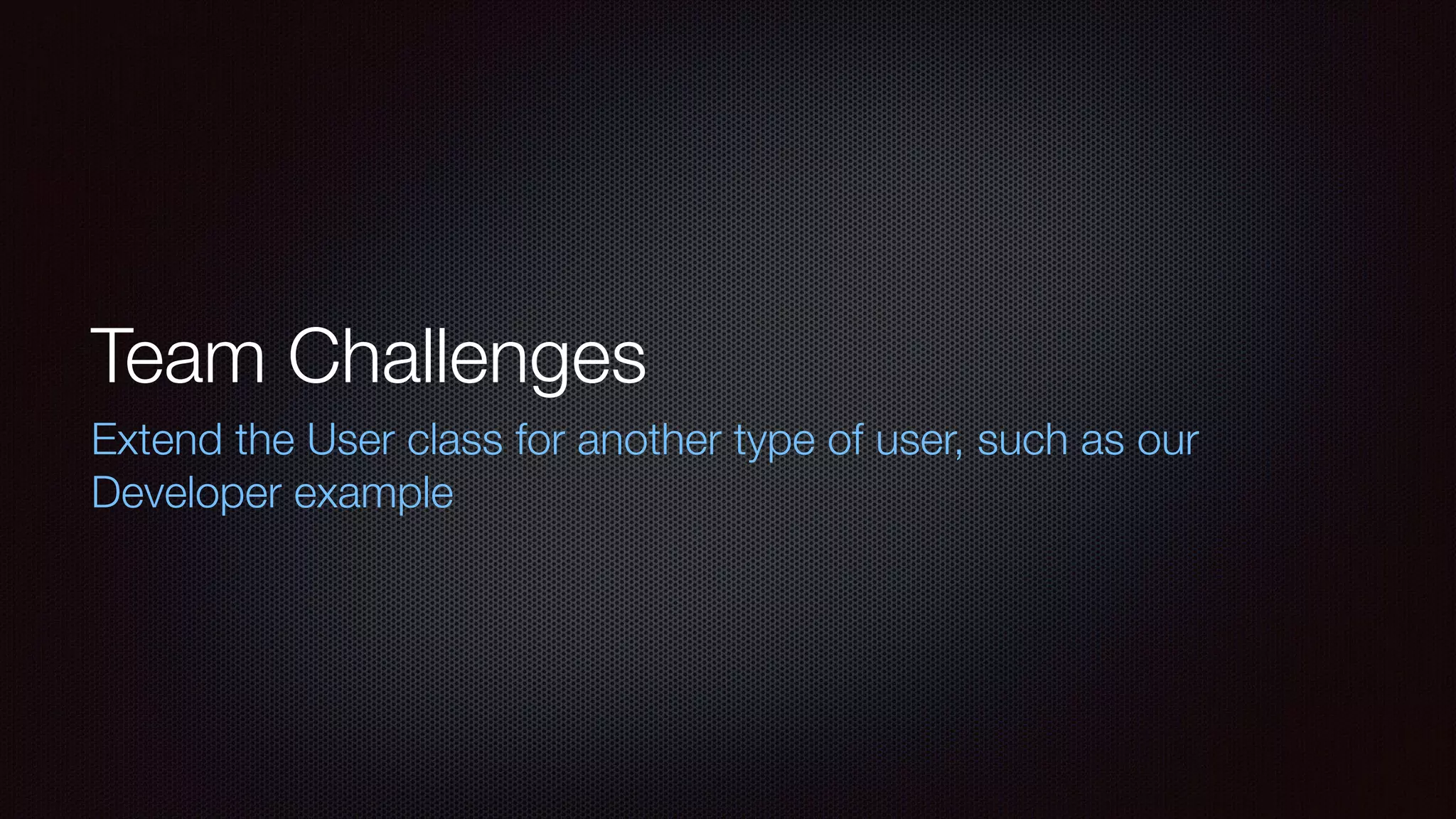
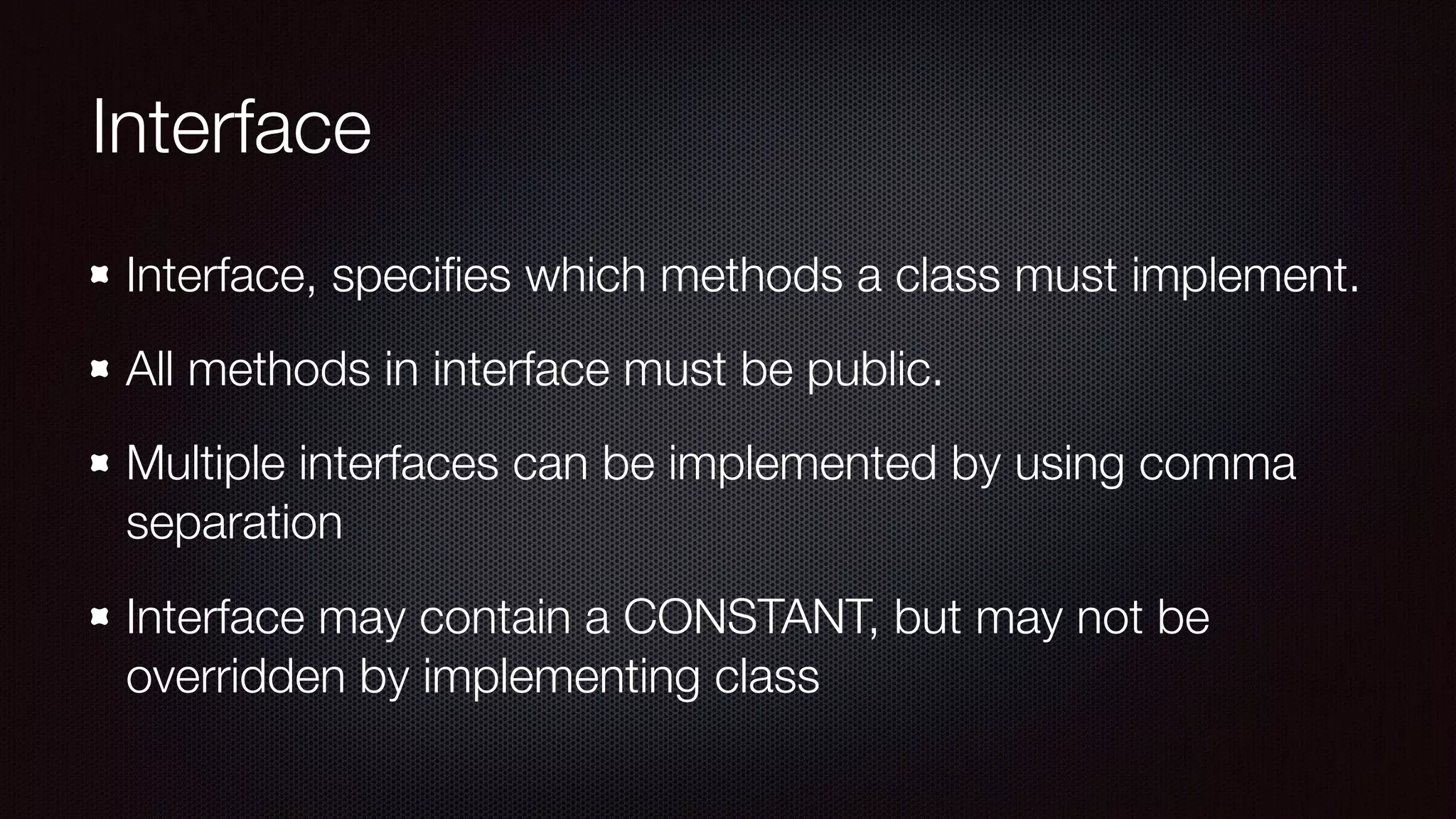


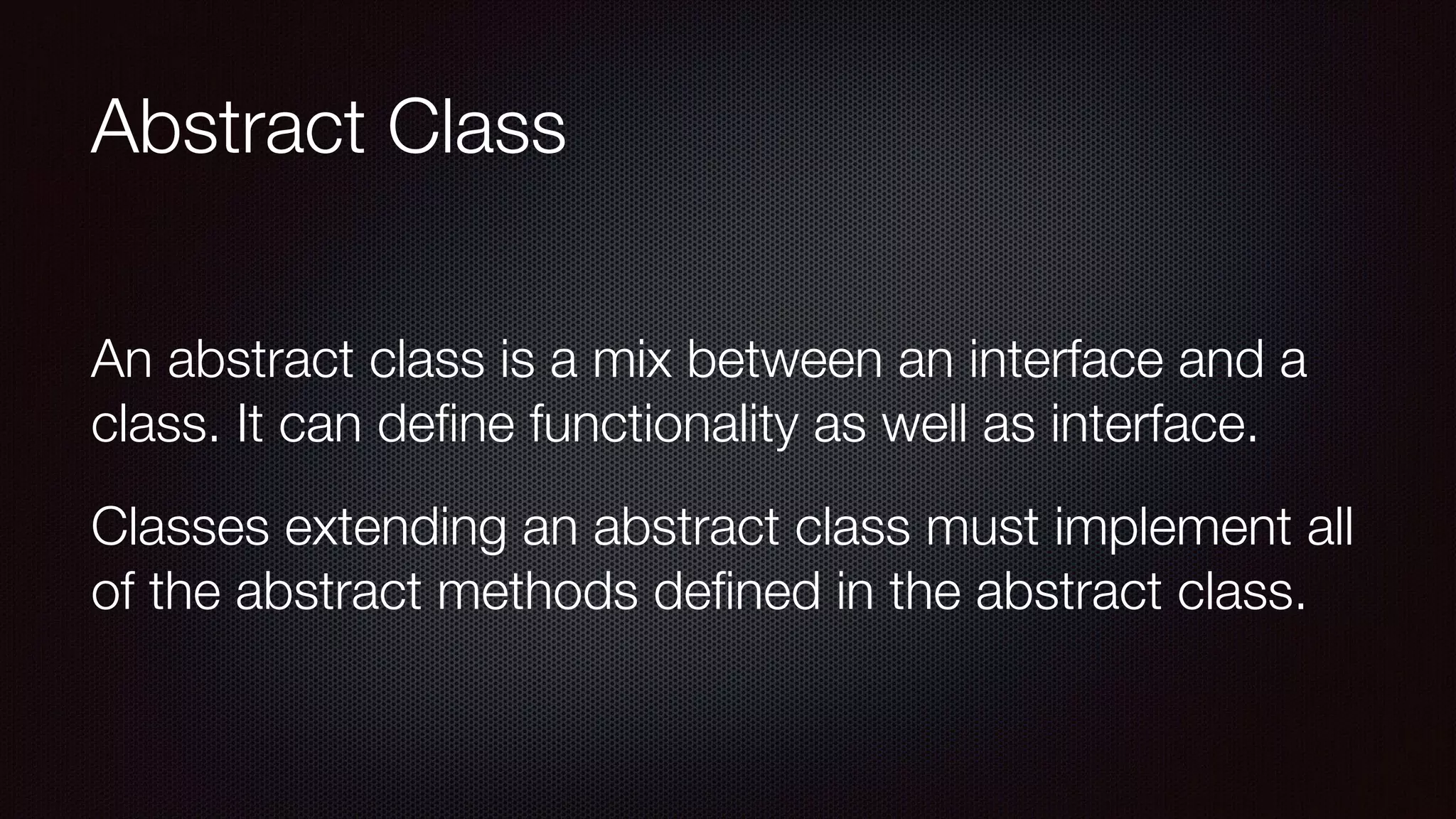

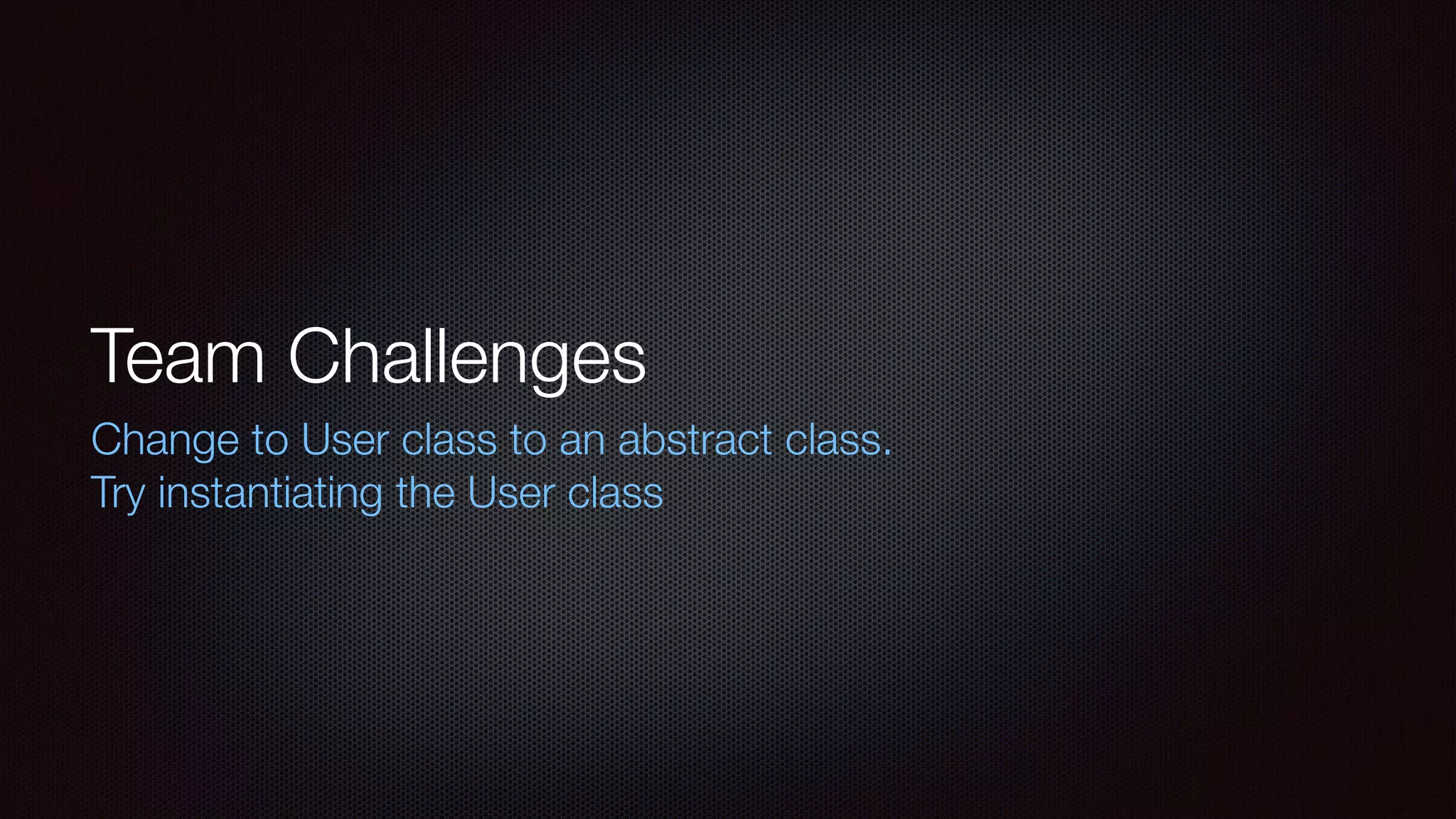
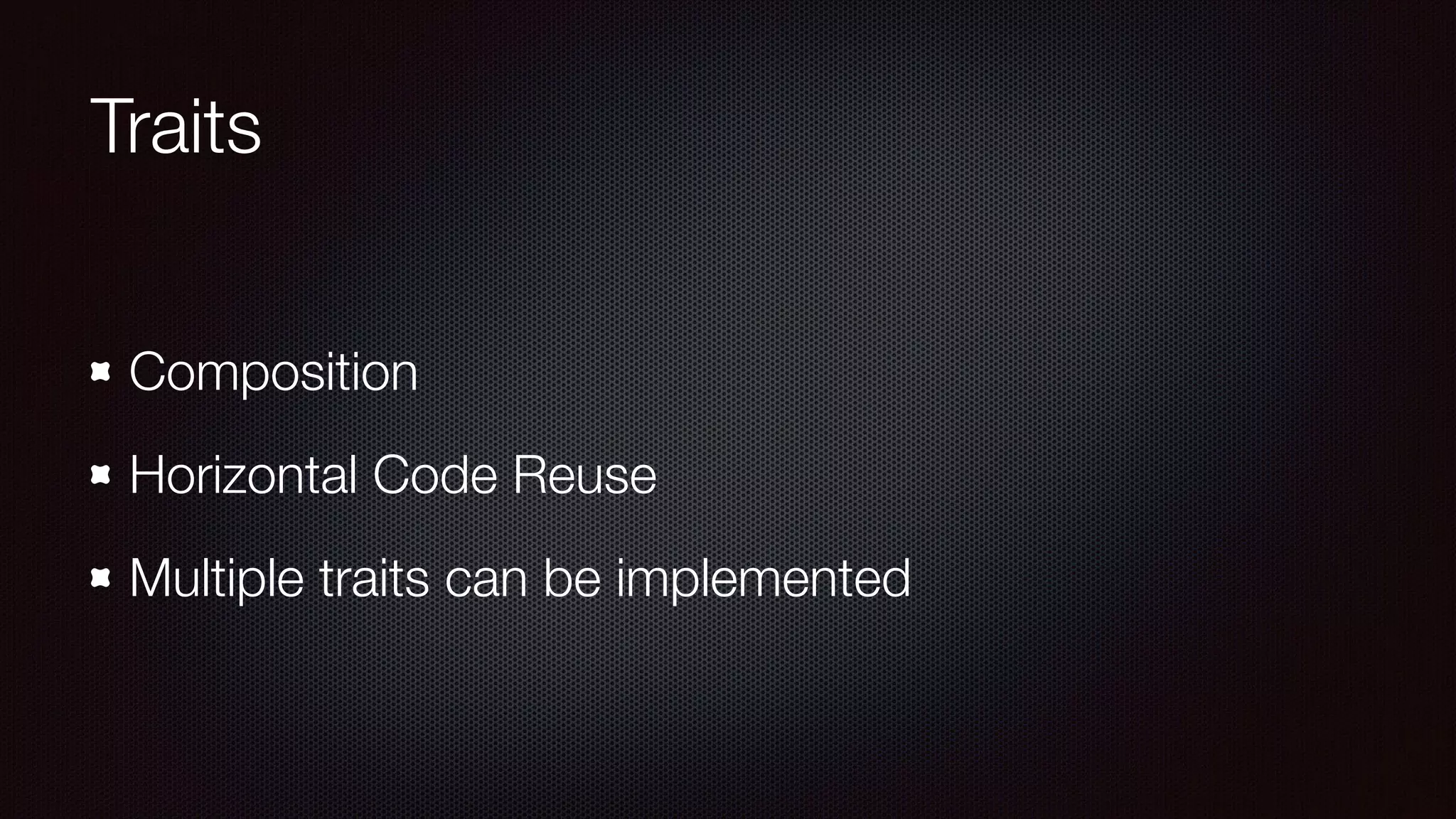
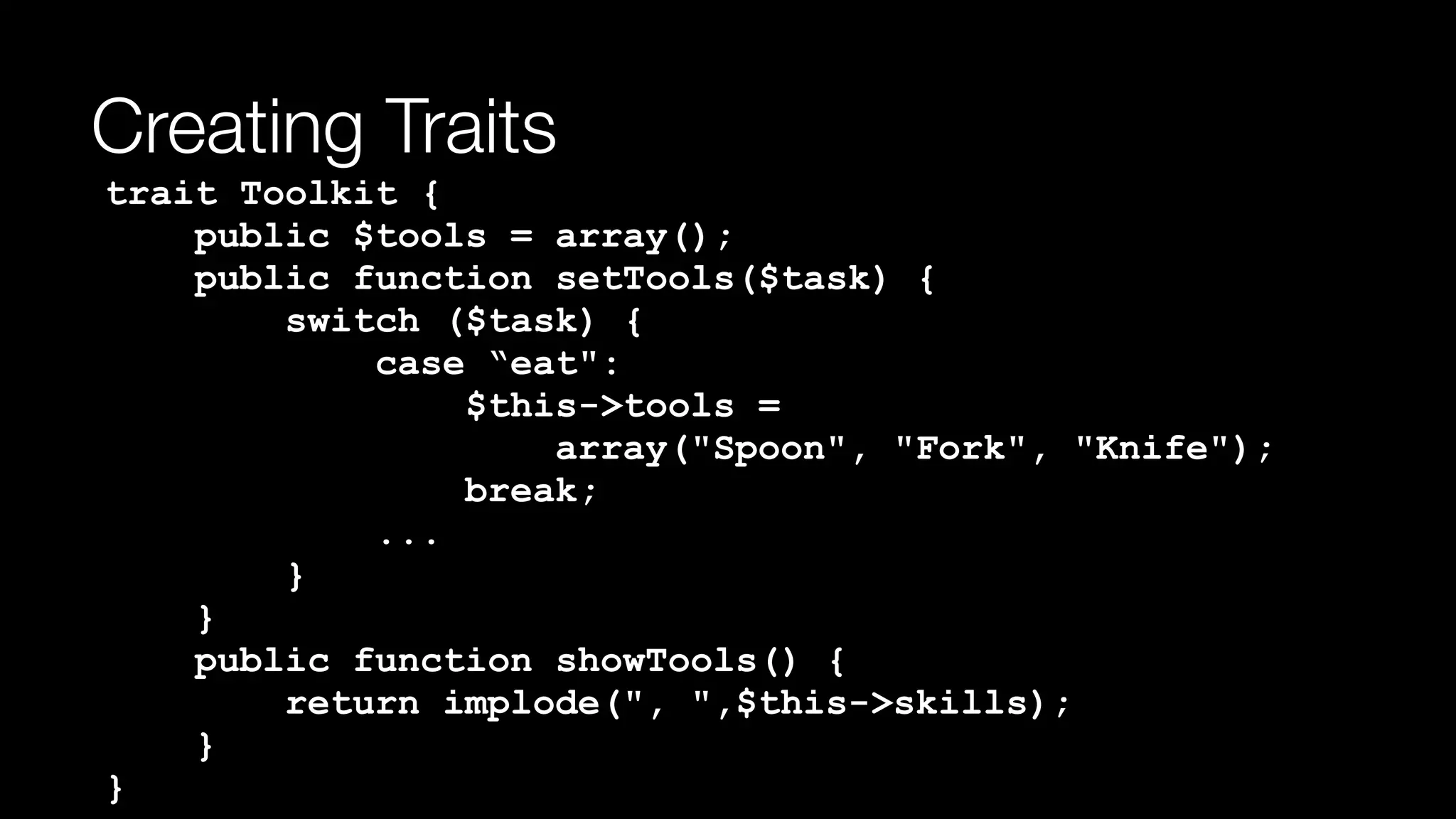
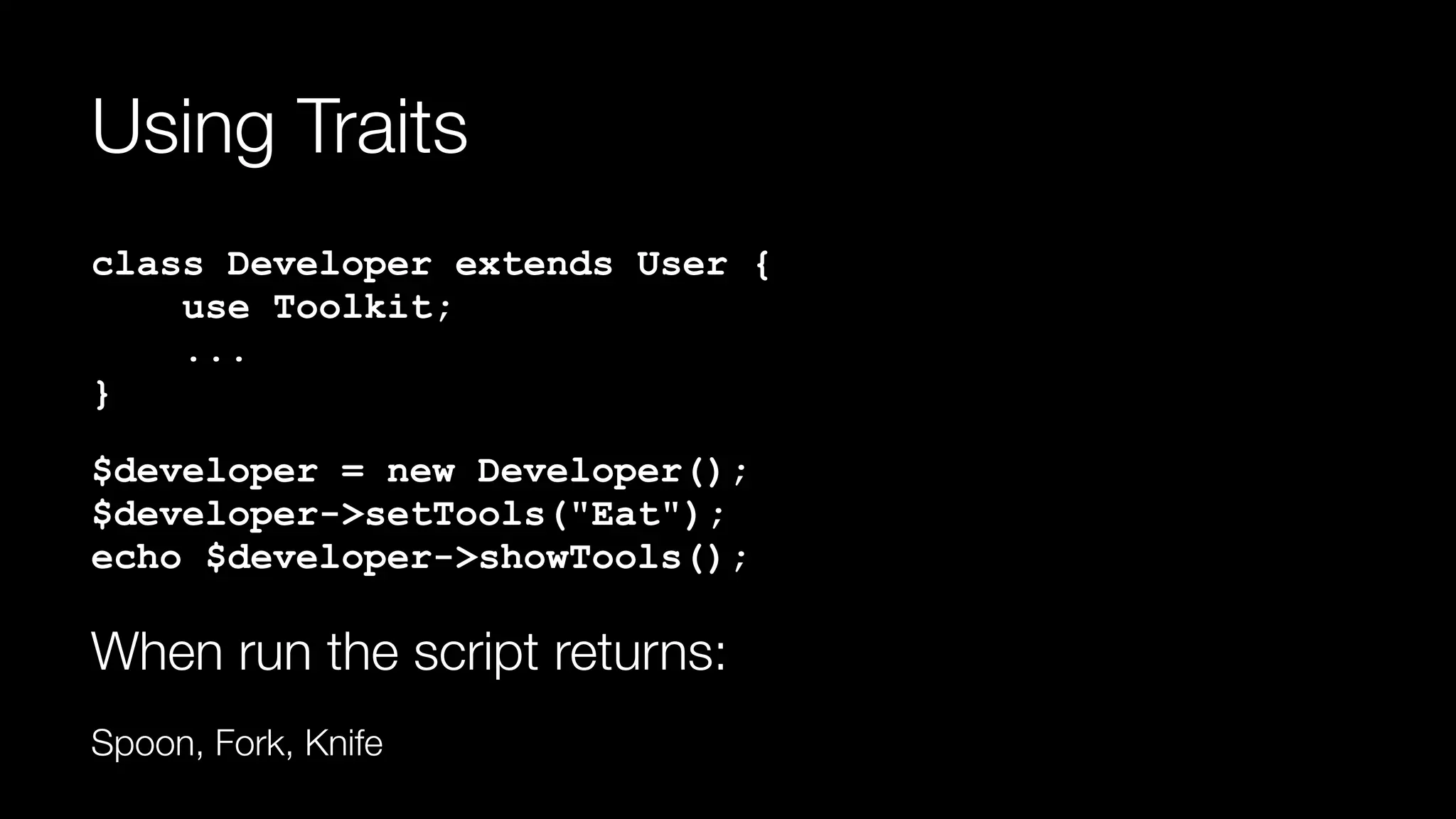


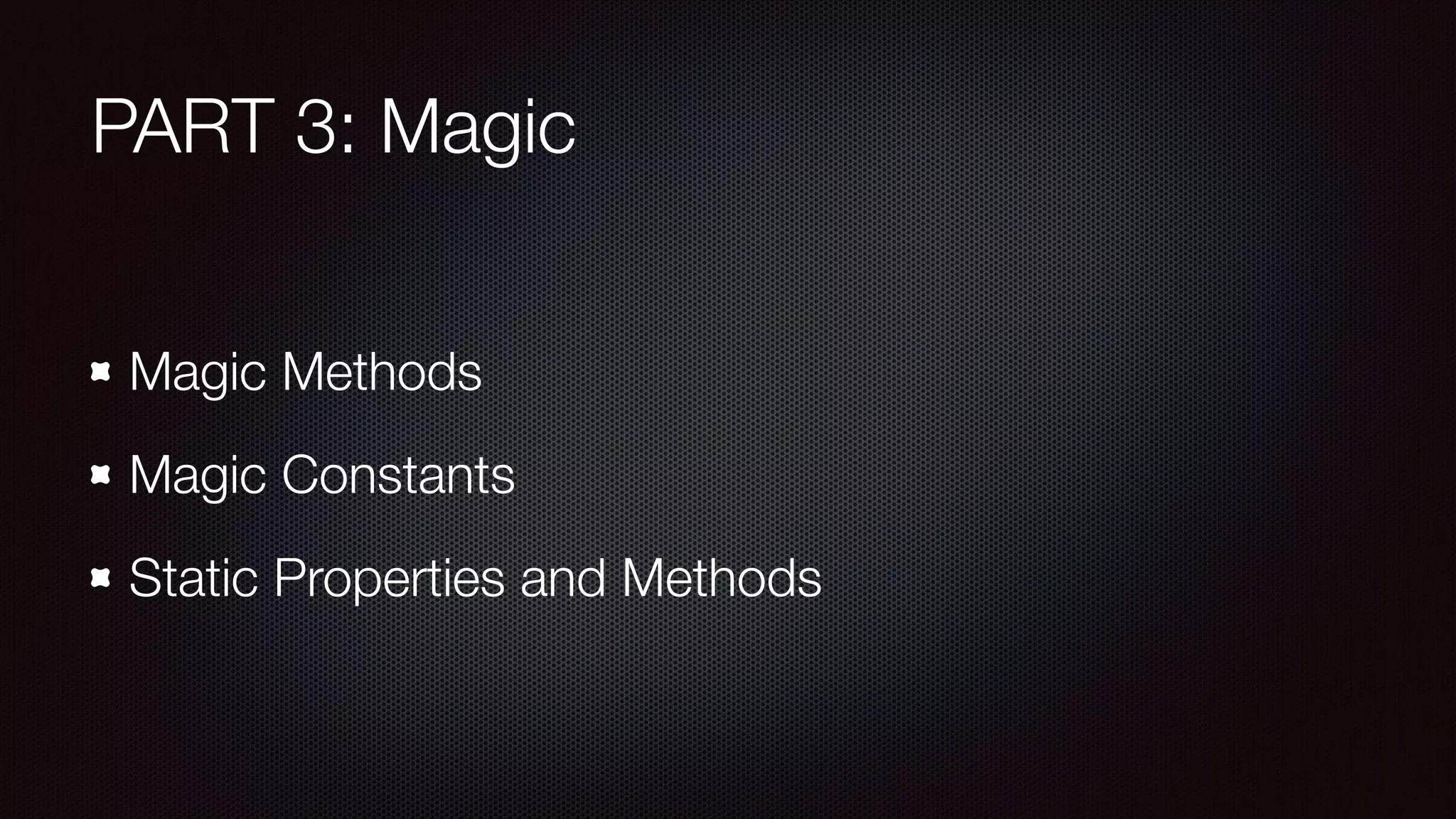
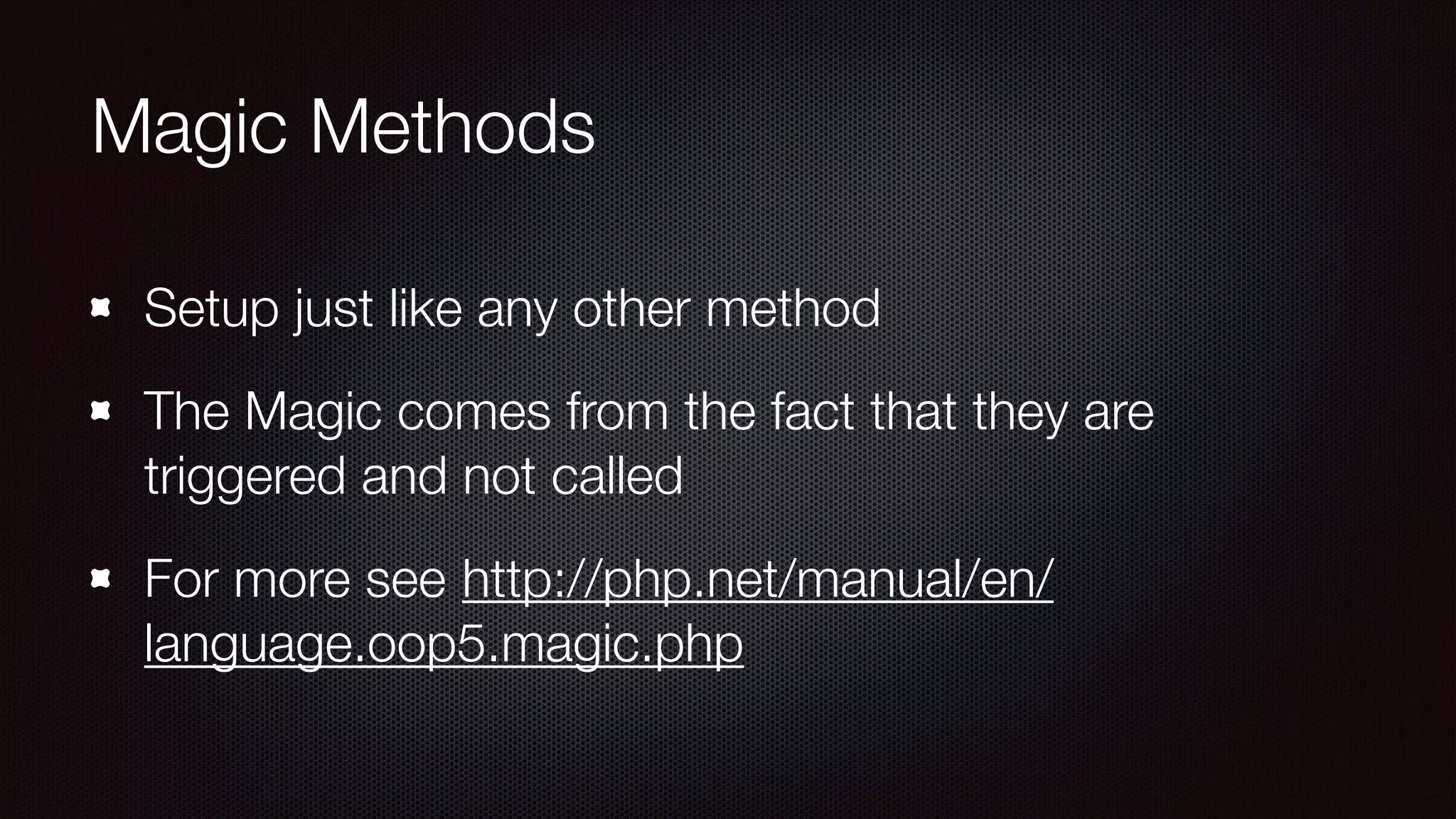

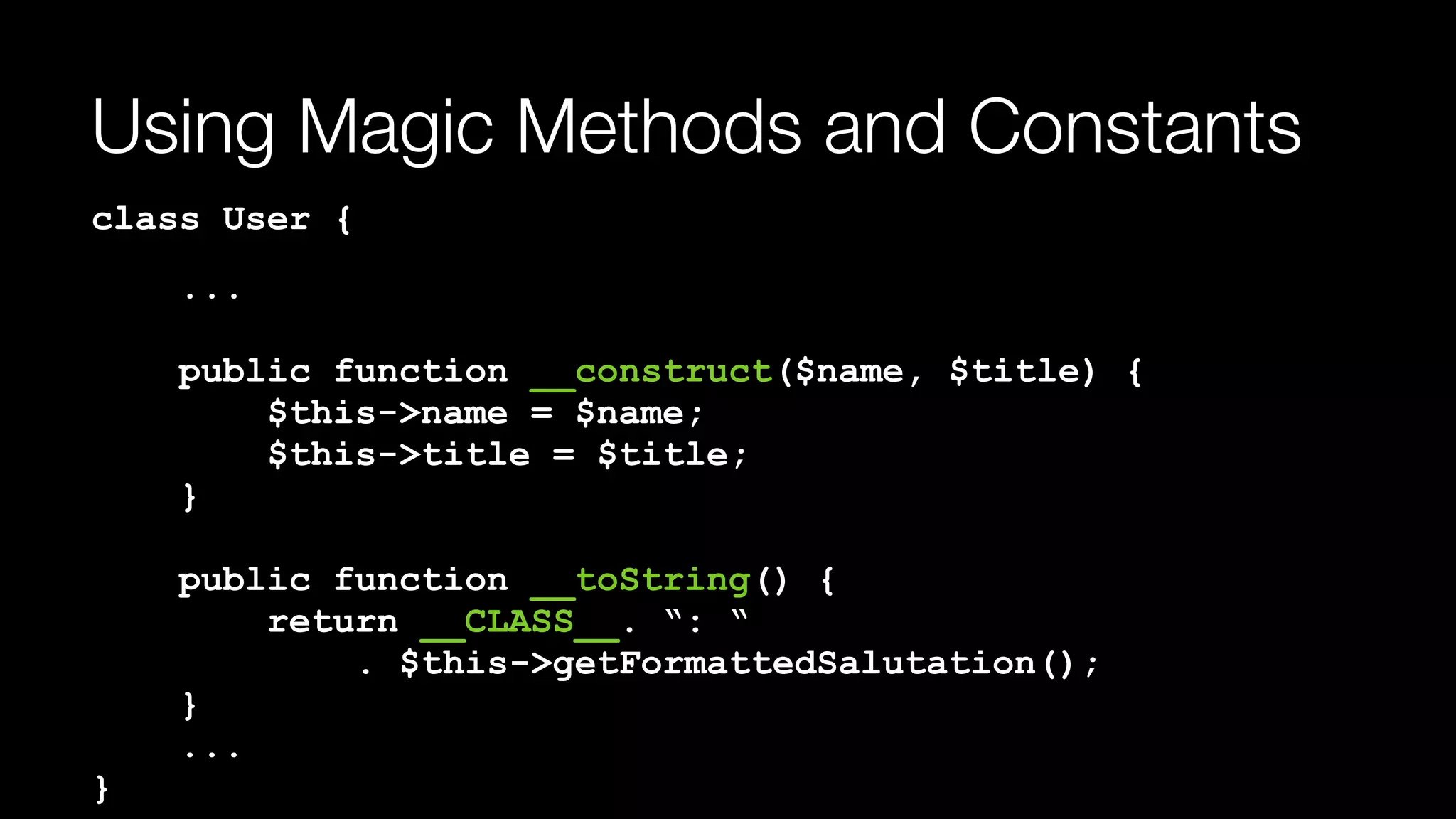


![Static Properties and Methods class User {
public static $encouragements = array(
“You are beautiful!”,
“You have this!”,
public static function encourage()
{
$int = rand(count($this->encouragements));
return self::encouragements[$int];
}
...
}](https://image.slidesharecdn.com/demystifyingoop-170523183857/75/Demystifying-Object-Oriented-Programming-PHP-tek-2017-41-2048.jpg)
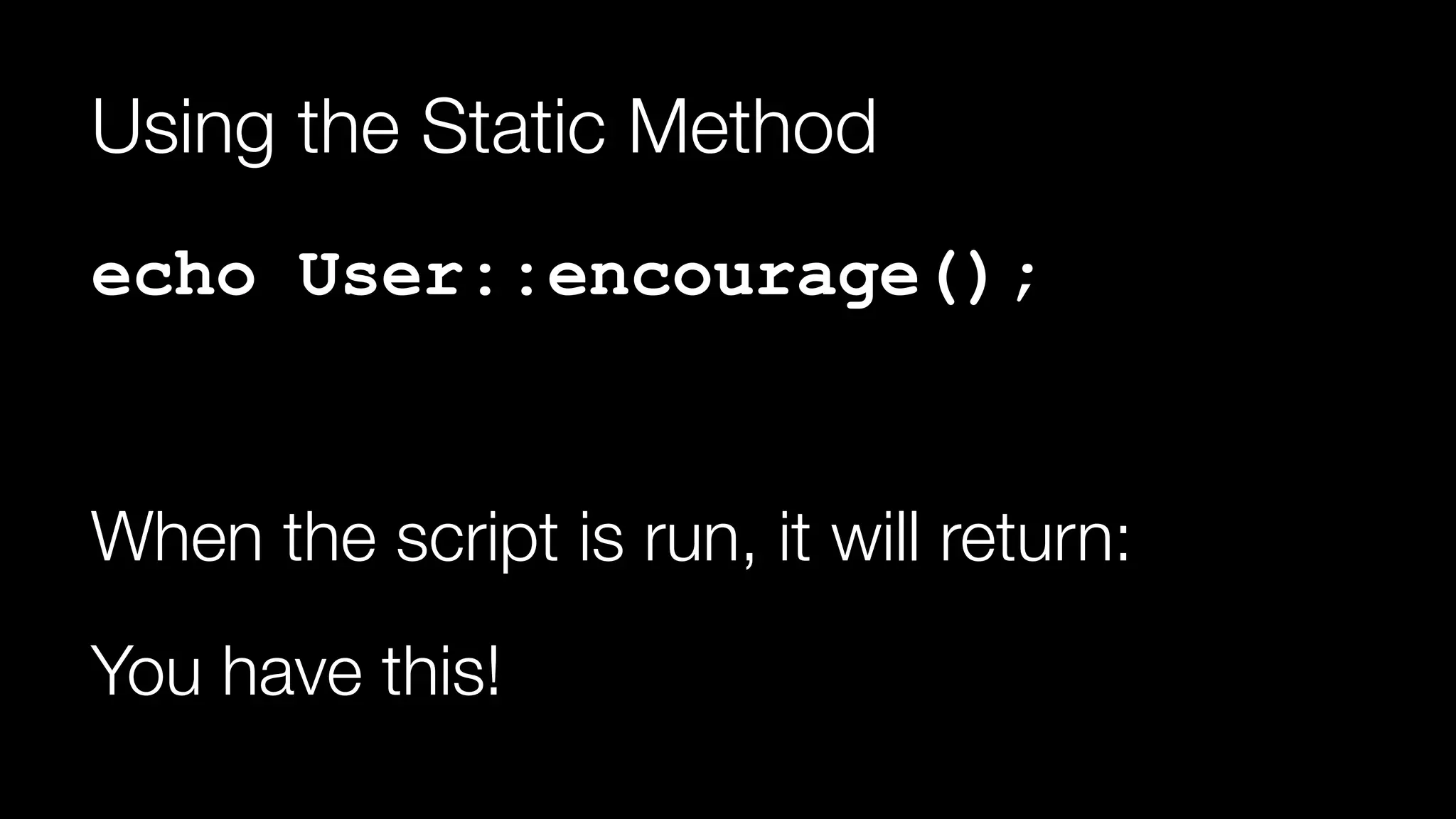

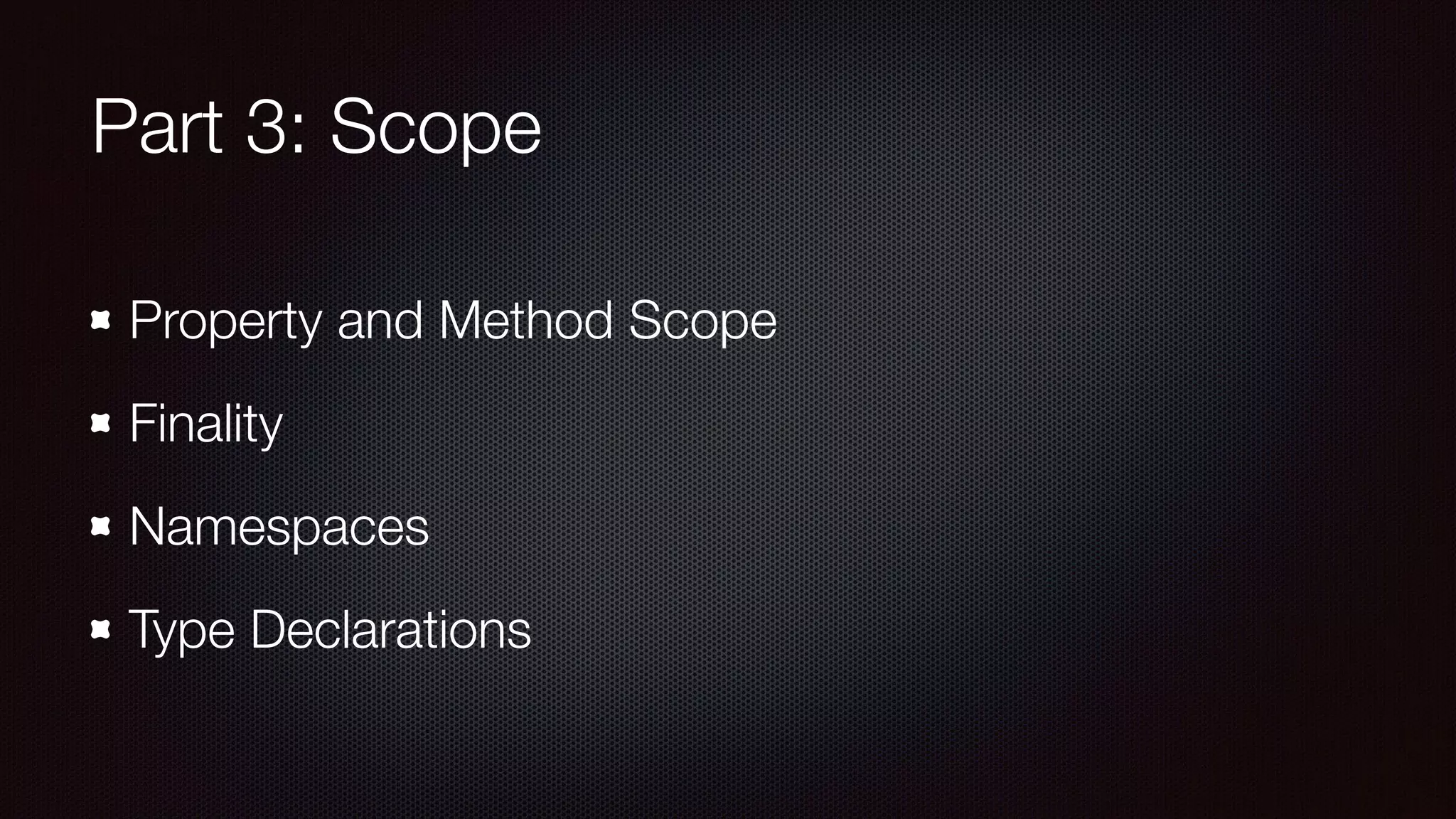
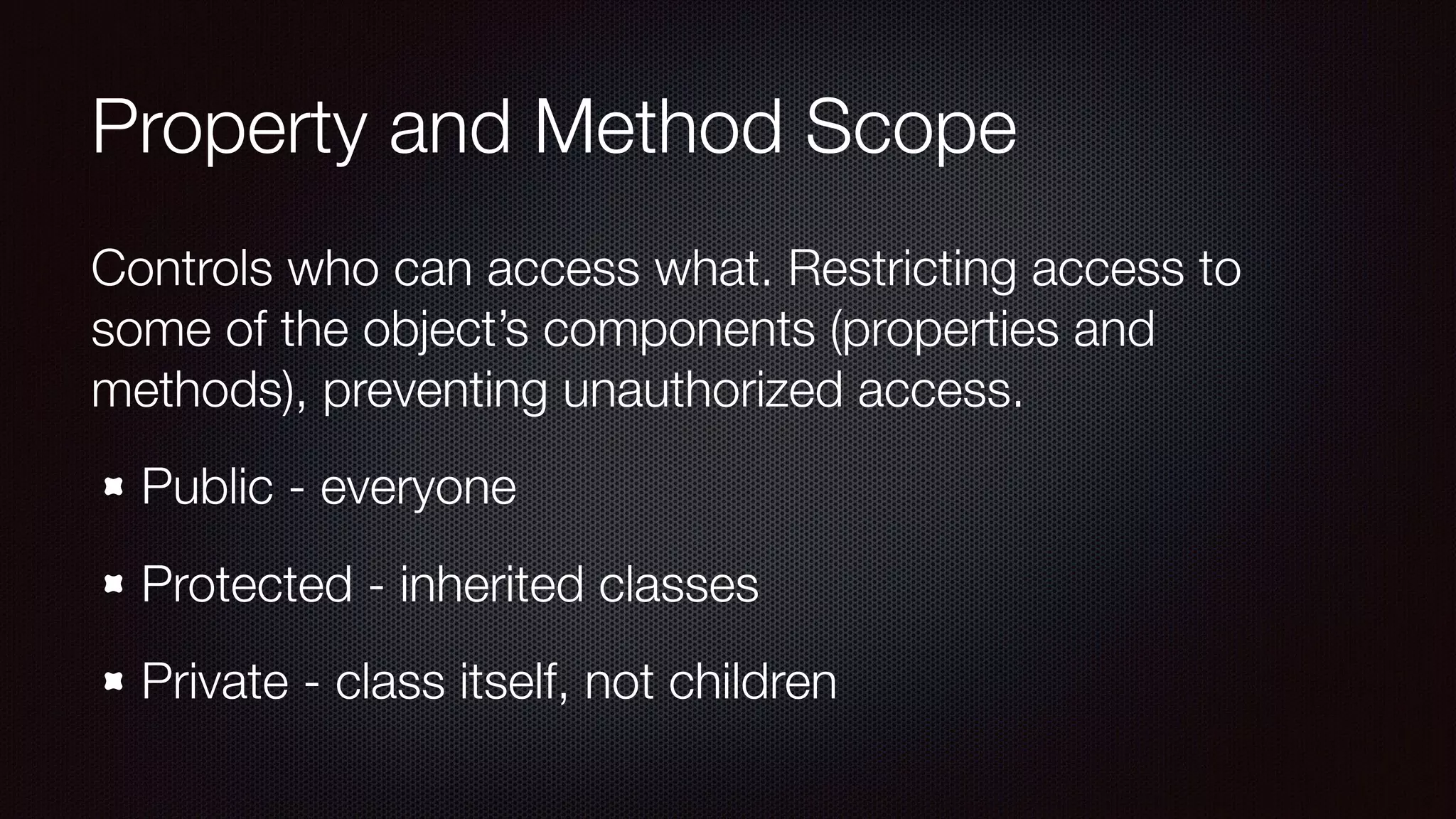


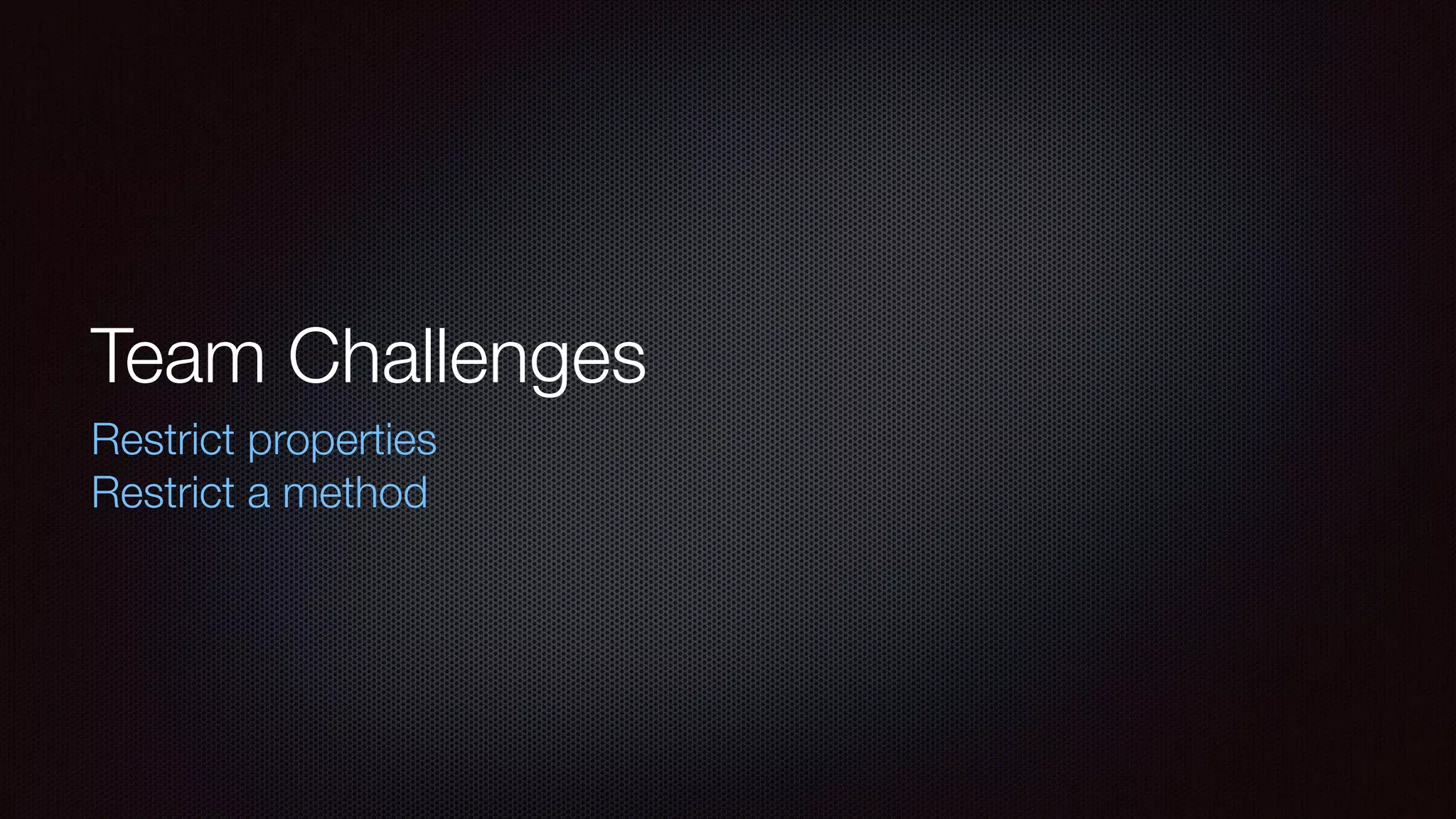
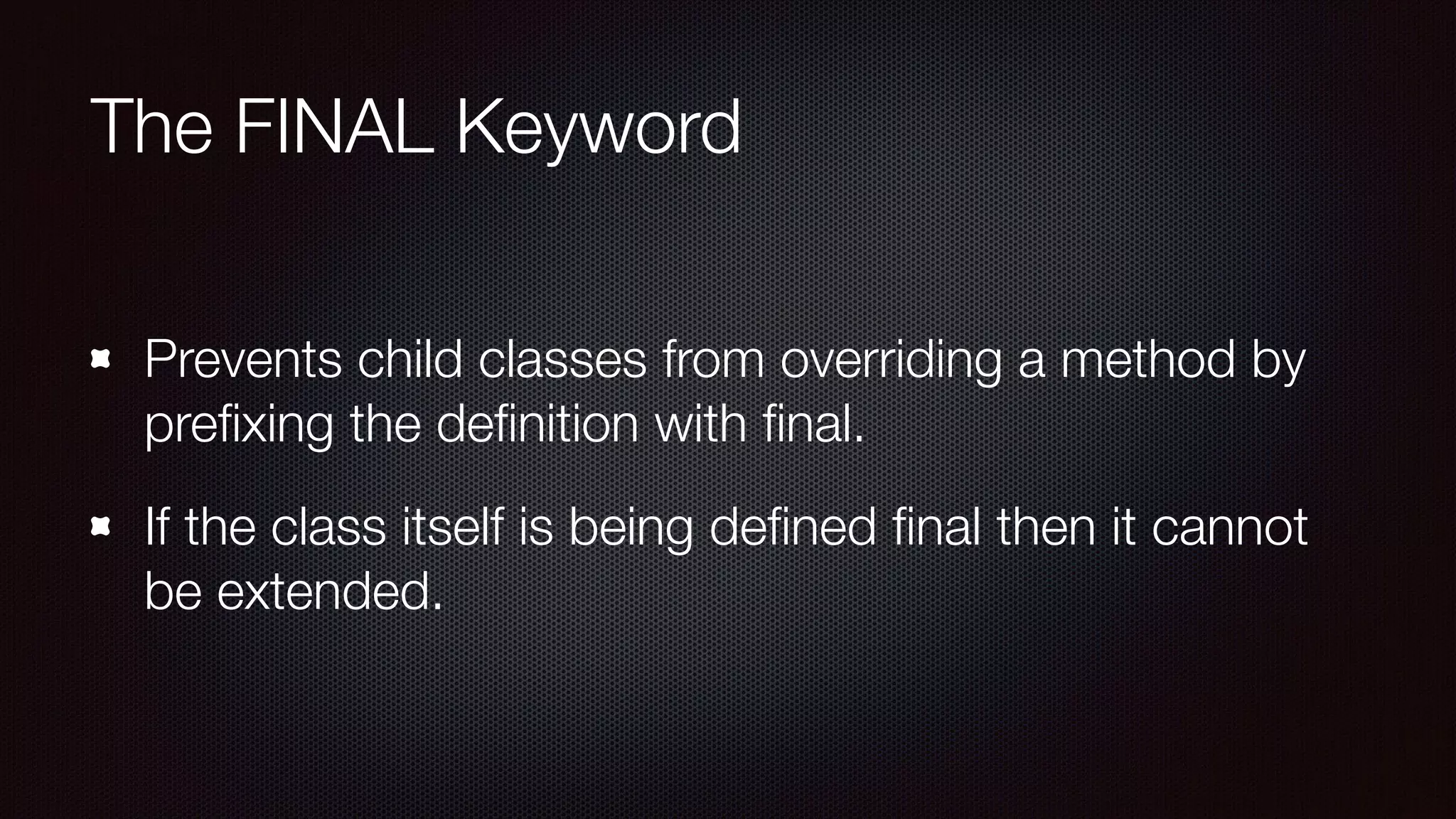
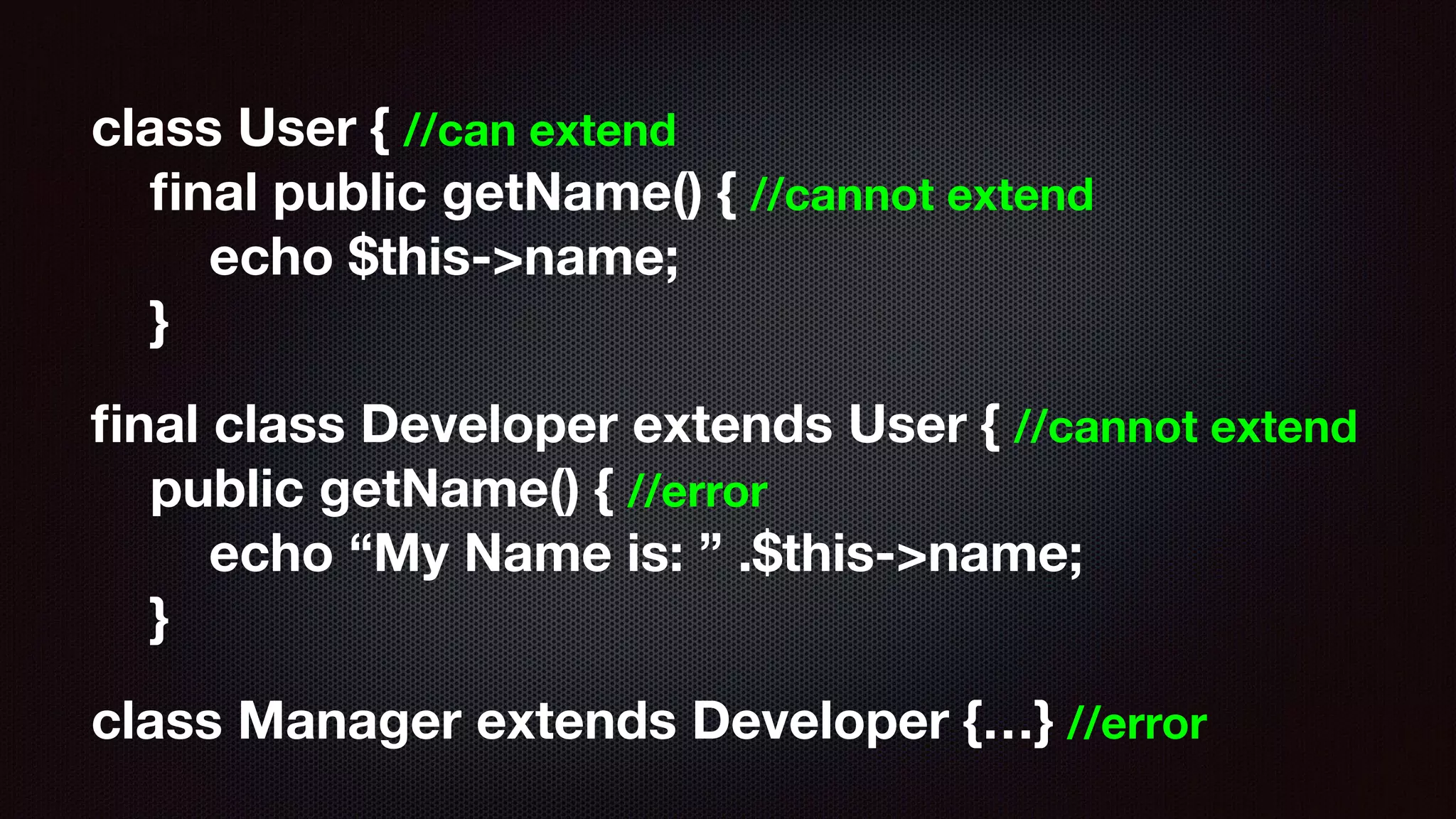

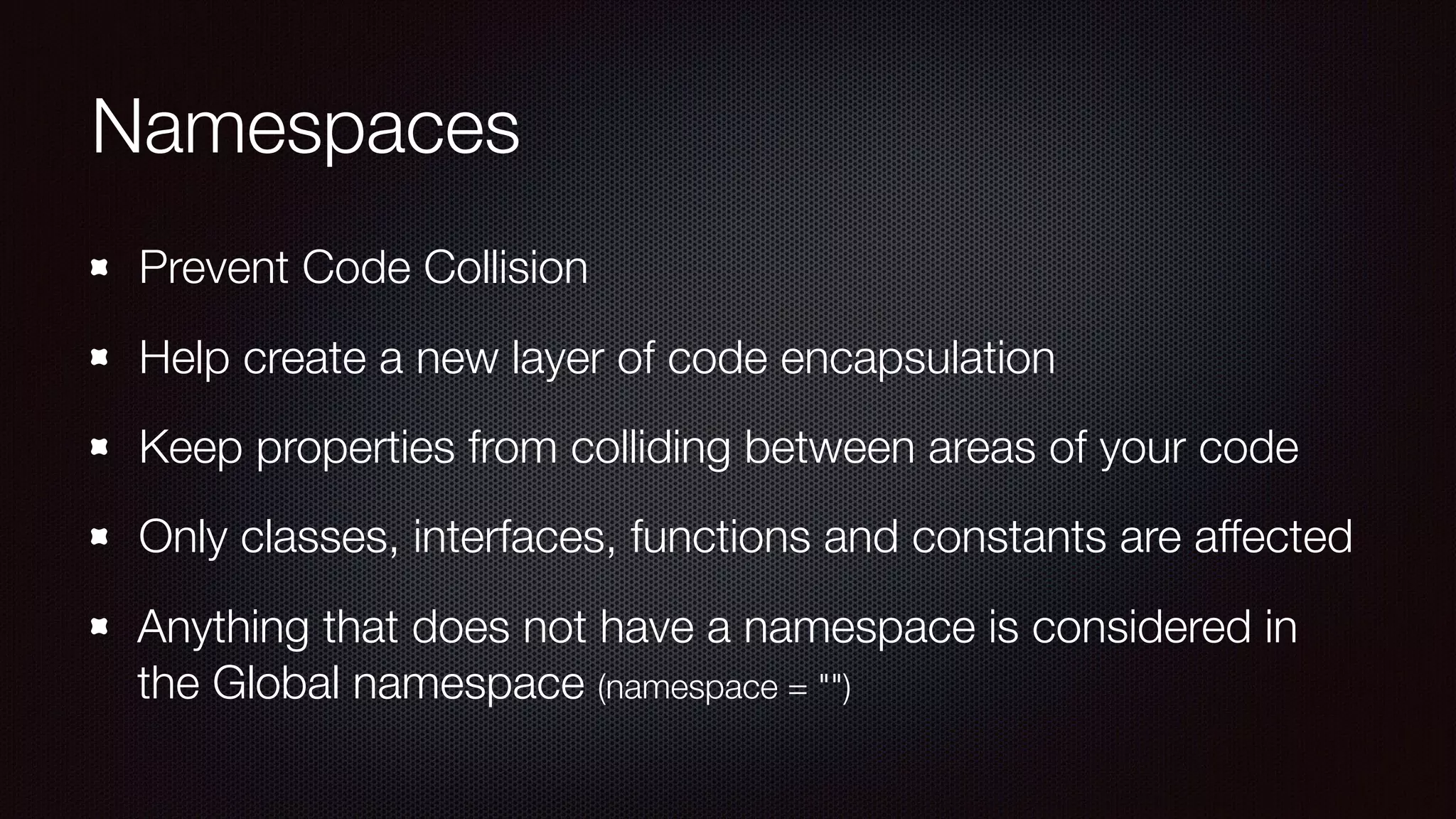



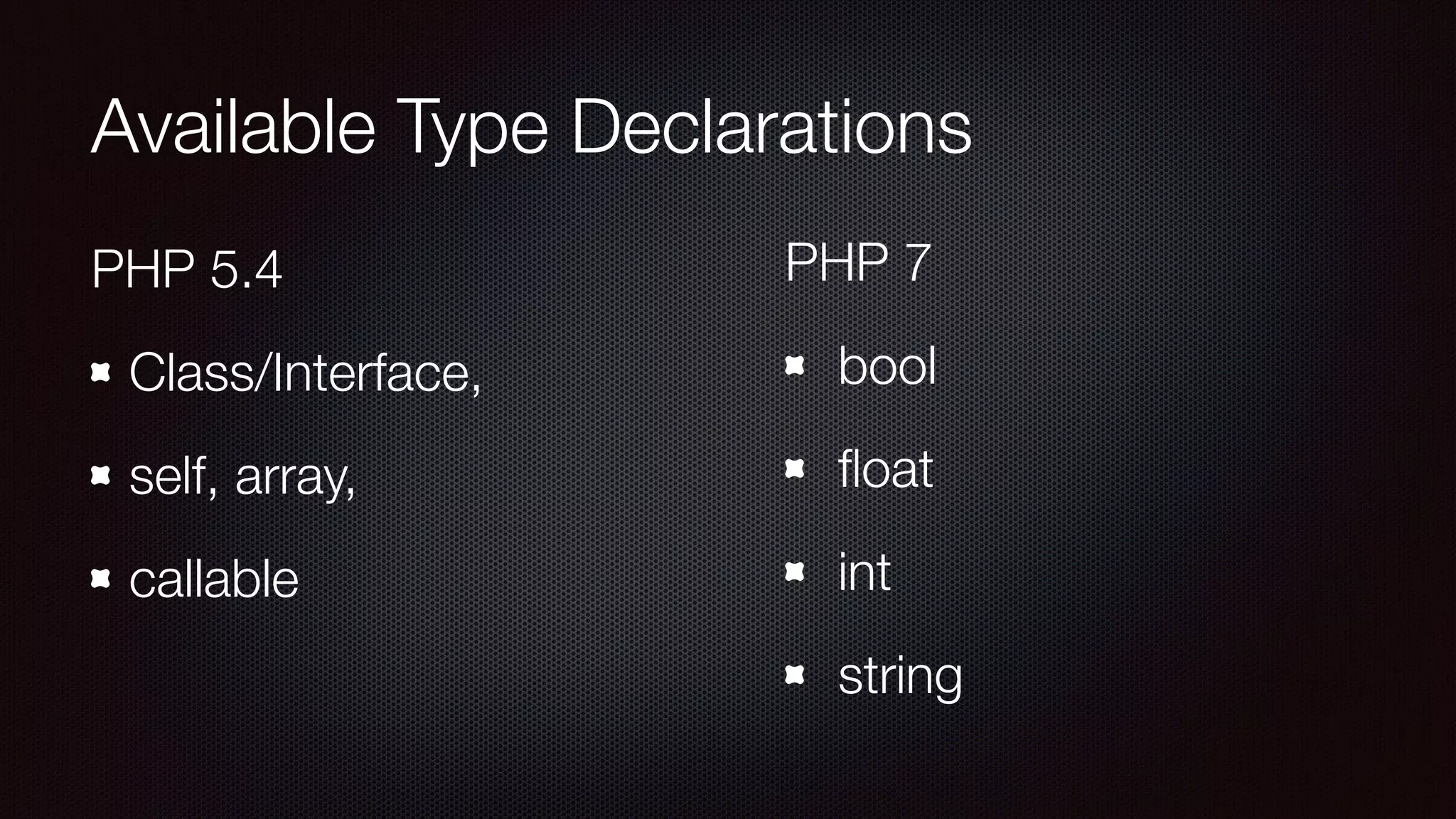
![Type Declarations class Conference {
public $title;
private $attendees = array();
public function addAttendee(User $person) {
$this->attendees[] = $person;
}
public function getAttendees(): array {
foreach($this->attendees as $person) {
$attendee_list[] = $person;
}
return $attendee_list;
}
}](https://image.slidesharecdn.com/demystifyingoop-170523183857/75/Demystifying-Object-Oriented-Programming-PHP-tek-2017-57-2048.jpg)
![Using Type Declarations $tek = new Conference();
$tek->title = ”PHP[tek] 2017”;
$tek->addAttendee($user);
echo $tek->title;
echo implode(", “, $tek->getAttendees()); When the script is run, it will return the same result as before: PHP[tek] 2017
Ms Jane Smith](https://image.slidesharecdn.com/demystifyingoop-170523183857/75/Demystifying-Object-Oriented-Programming-PHP-tek-2017-58-2048.jpg)
